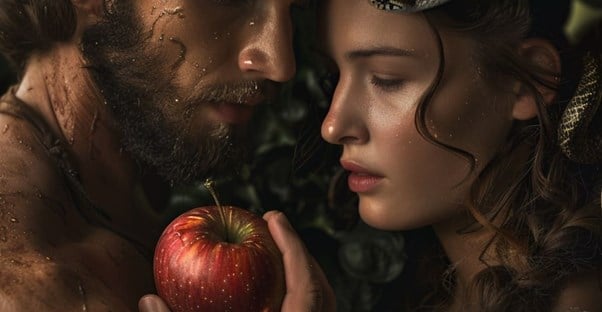Mary Magdelene
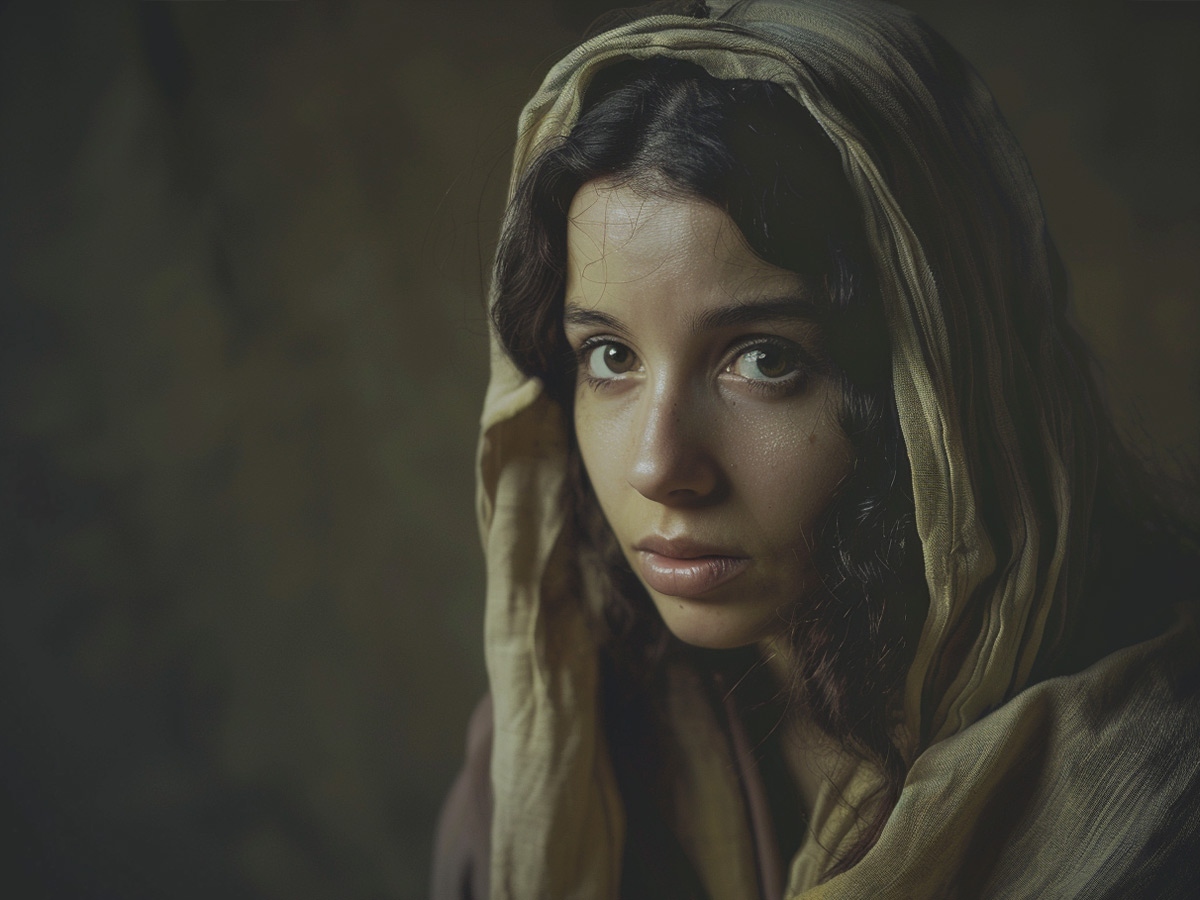
Mary Magdalene, sometimes called Mary of Magdala, was a woman who traveled with Jesus as one of his followers. She is one of the witnesses of his crucifixion and resurrection. She's mentioned by name more than most of the apostles and more than any other woman in the gospels besides Jesus's family.
Like much of the Bible, she's yet another Biblical figure that is shown as being fair-complected with long, red hair. The red hair is a Western portrayal meant to communicate sinful lustiness. But as you can see here, she is darker-complected—and though her hair is covered, it's safe to assume it's a dark brunette.
Moses

Versions of Moses have been depicted for quite some time. From portraits to movies to animations to books, Moses is a popular figure! Considered the most important prophet in Judaism and one of the most important prophets in Christianity, Islam, and other faiths, he's known for the plagues in Egypt, parting the Red Sea, and receiving the Ten Commandments straight from God.
Usually seen as an old man with a long, gray beard and a kind of wild head of hair with an expression to match, the AI image shows us a slightly different take. Here, we see him not only with a long white beard and long white hair, he's also quite bald on top. That's a bold take on the prophet!
Adam and Eve
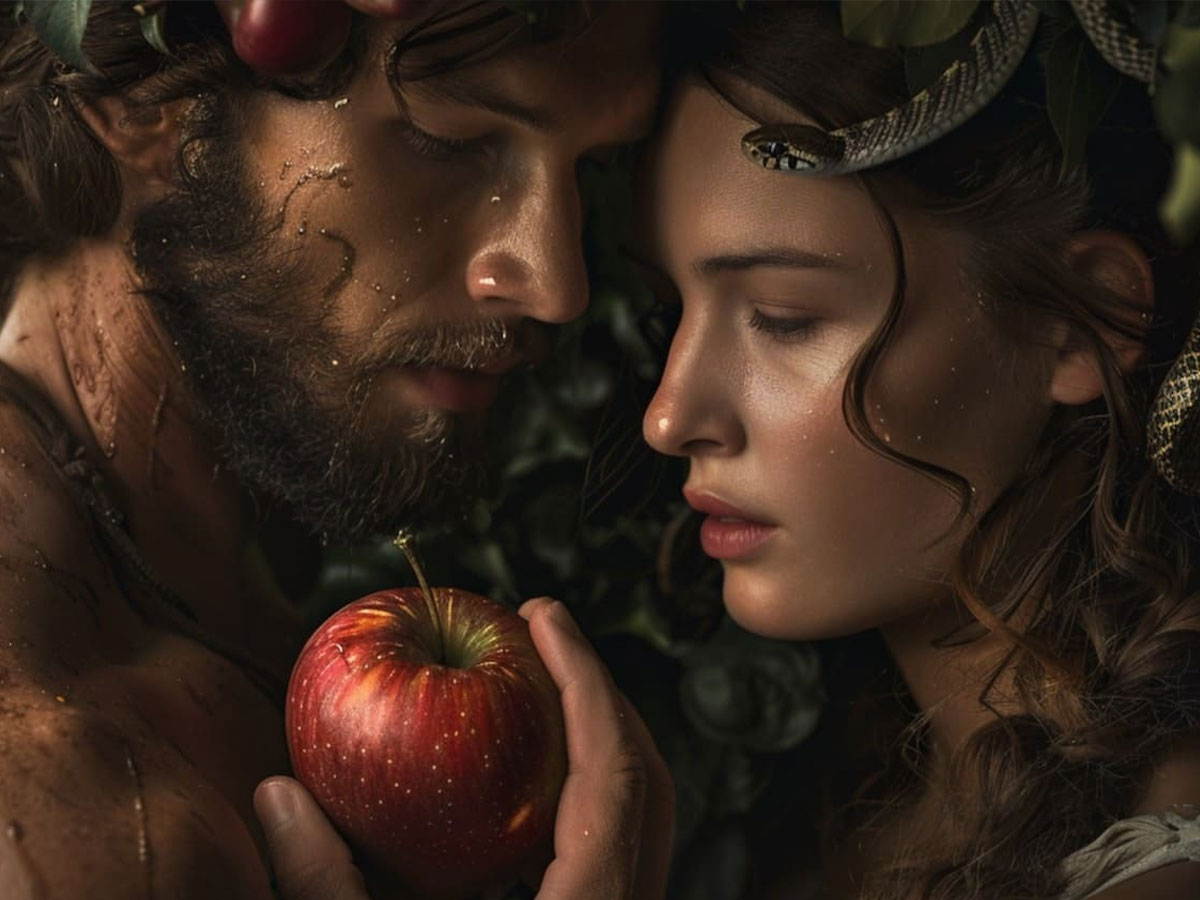
Adam and Eve were the first people to walk this earth, according to the Bible. So what did the first man and woman look like? Most portraits depict them as light-skinned, with an average build. Eve has long, flowing hair, while Adam has what we may consider an average-looking male hairstyle. Oh, and they're naked, of course.
AI thinks of these two figures as having darker skin than other portrayals, dark hair, and an average to slender build. Eve is not entirely sans-clothes, sporting a necklace—did she make it, or did Adam make it for her? Based on this analysis, I'd say we had some attractive ancestors!
Martin Luther
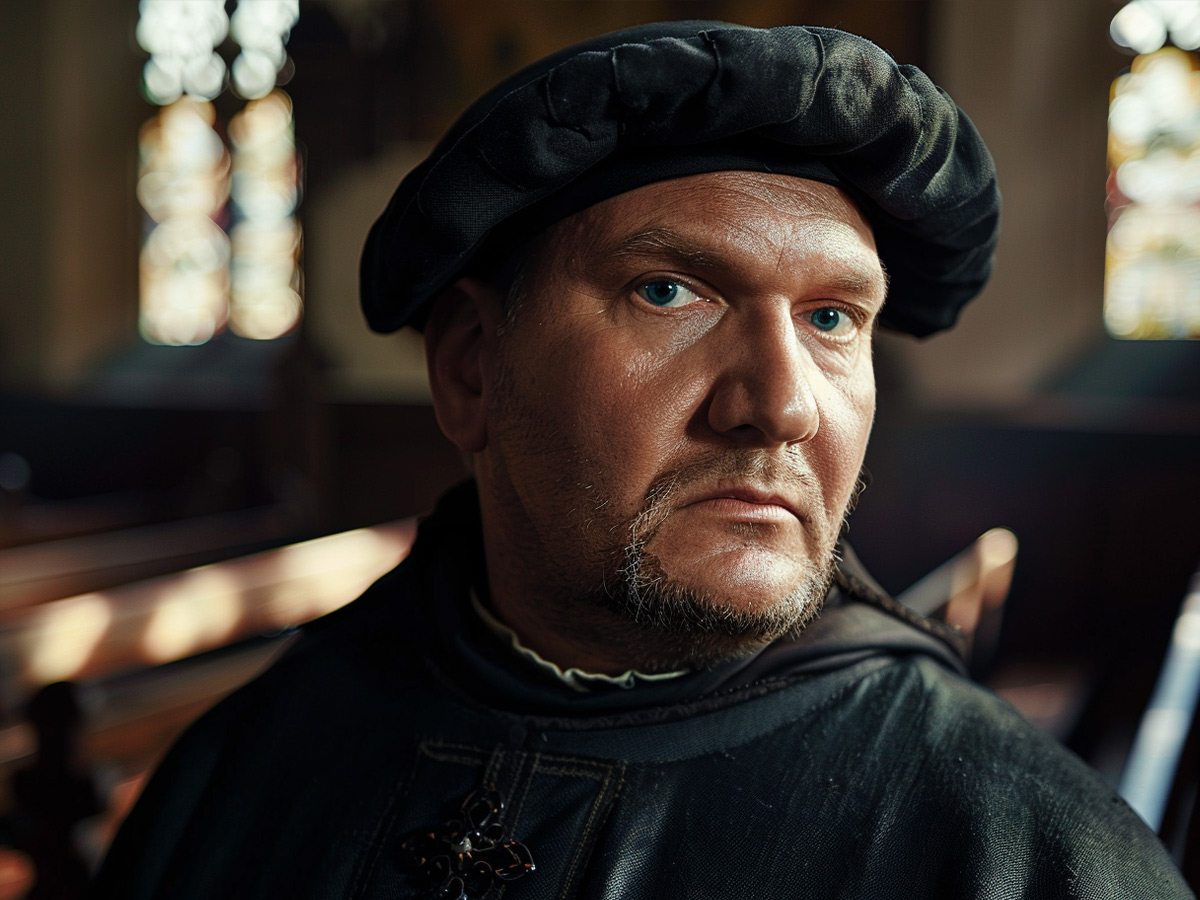
Martin Luther is most well-known for his criticisms of the Catholic Church in his famous Ninety-Five Theses, which eventually led to his excommunication and the development of a whole new branch of Christianity named after him. While he was by no means the only important figure in the movement, he is often considered one of the biggest figures in the Protestant Reformation of the 16th century.
We actually have quite a few artistic depictions of Martin Luther, and this AI-generated image seems to be pretty similar to those, but with much more detail...and a few questionable elements. The high degree of texture in his skin makes poor Luther look like he's just gotten home from a wild night out. And what happened to the guy that made his irises different sizes?
Zeus
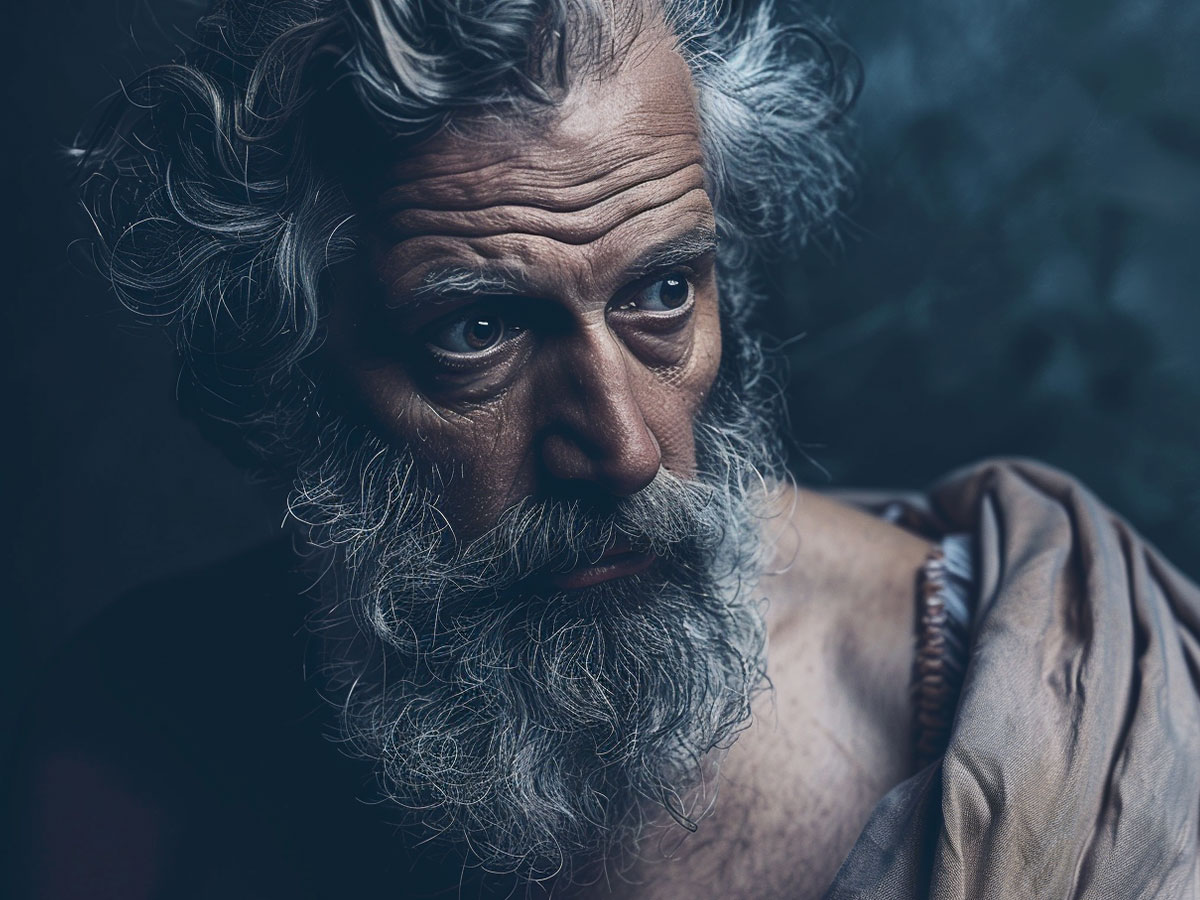
In Greek mythology, Zeus is the king of the gods who reside on Mount Olympus and everyone's favorite deadbeat dad. After narrowly managing to escape being eaten by his father, Zeus would go on to become the god of thunder and the sky in the pantheon of the numerous Greek deities.
This AI-generated image does a pretty good job of depicting this famous deity. The background, coupled with his flowing white hair and beard, definitely give off some serious sky god vibes. But once again, the finer details leave us with some major questions—like why his index finger looks like it's a big toe.
Kali
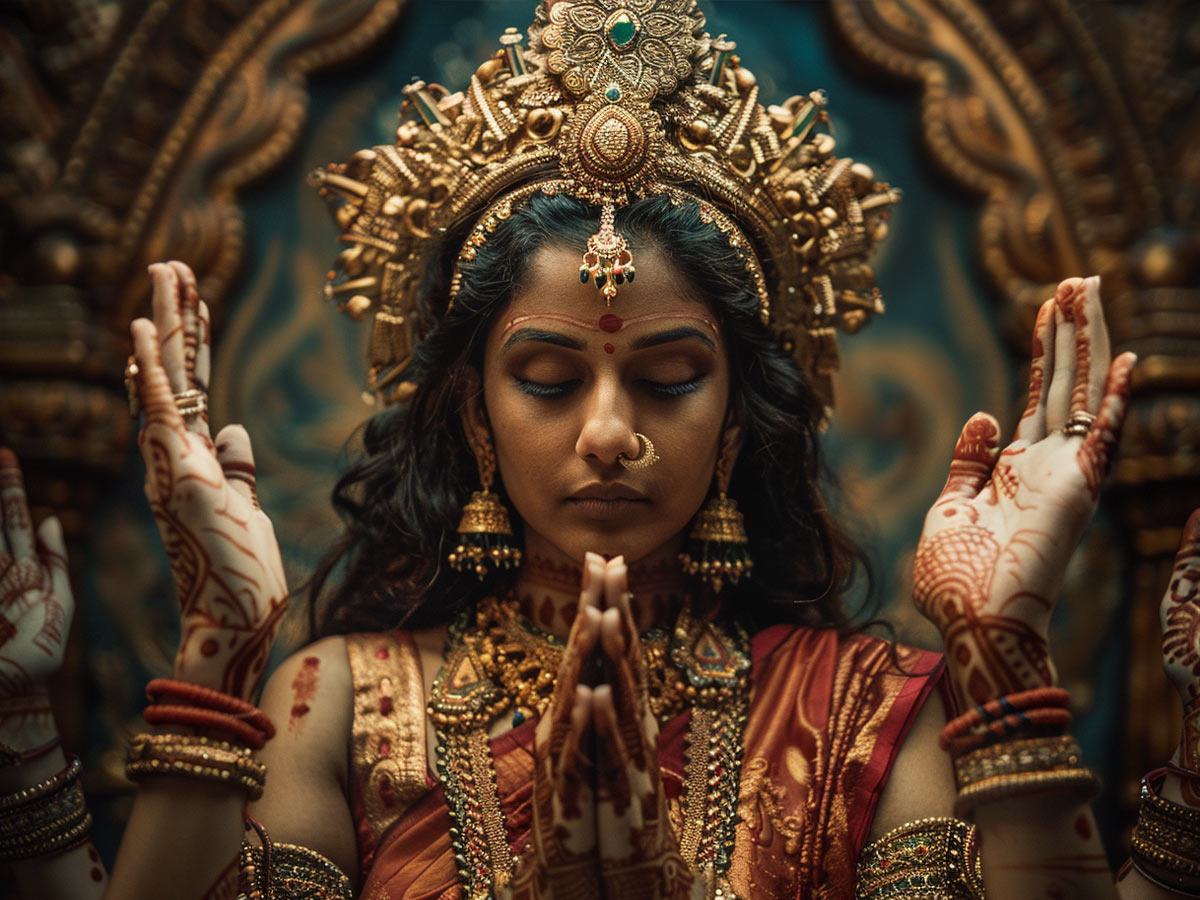
Kali is one Hindu goddess you don't want to mess with. Though her nature varies from religious tradition to tradition, she is commonly known as the goddess of power, destruction, and time. In one of her most famous stories, Kali emerges from the head of another goddess to devour an entire horde of demons.
This AI image does a decent job of presenting Kali accurately. She is almost always depicted as having dark blue skin, so that part checks out. However, the goddess in this photo just looks way too nice to be someone as fearsome as Kali herself! Does this look like someone who just ate a demon army?
Mary, the Mother of Jesus
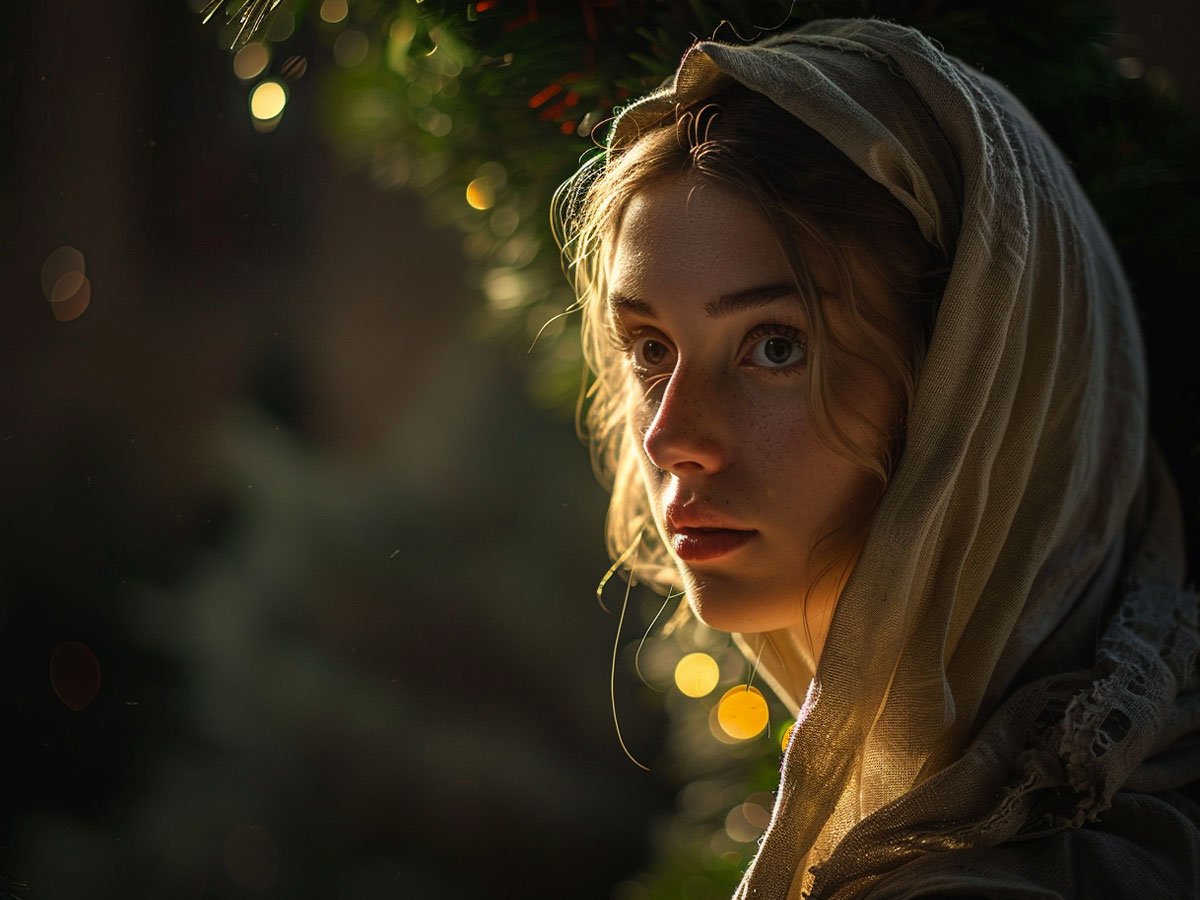
While Jesus is obviously the main focal point of Christianity, his mother, Mary, is another highly-regarded figure from the Gospels. According to the account in the Bible, Mary was visited by an angel who told her that she, a virgin, would give birth to the son of God.
This AI-generated image of Mary is probably one of the best we've seen. Obviously, no one knows what Mary would have actually looked like, but this image does pick up on one artistic tradition associated with the mother of God. In art, Mary is often depicted as wearing blue, which was at one point considered to be a color associated with royalty.
Michael
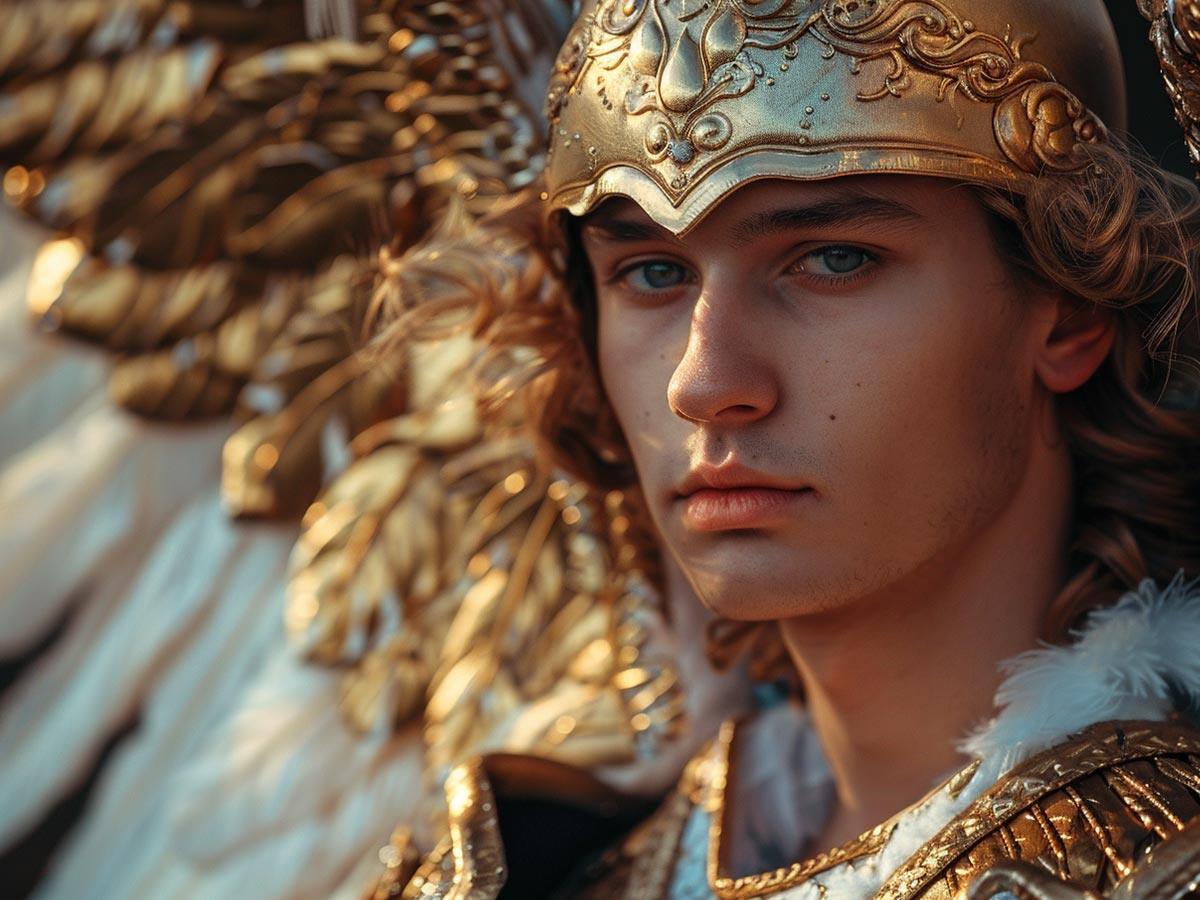
Michael is seen as a leader among angels, a warrior clad in armor who defends good against evil forces like Satan. Descriptions hint at a fearsome appearance and a booming voice. Paintings and sculptures depict him with large wings, radiating light, and sometimes even a handsome face.
However, these are artistic choices to depict Michael's heavenly nature and immense power. Biblically-accurate angels are fearsome creatures with multiple wings, hundreds of eyes, and the bodies of animals, and they radiate otherworldly light.
Mother Teresa
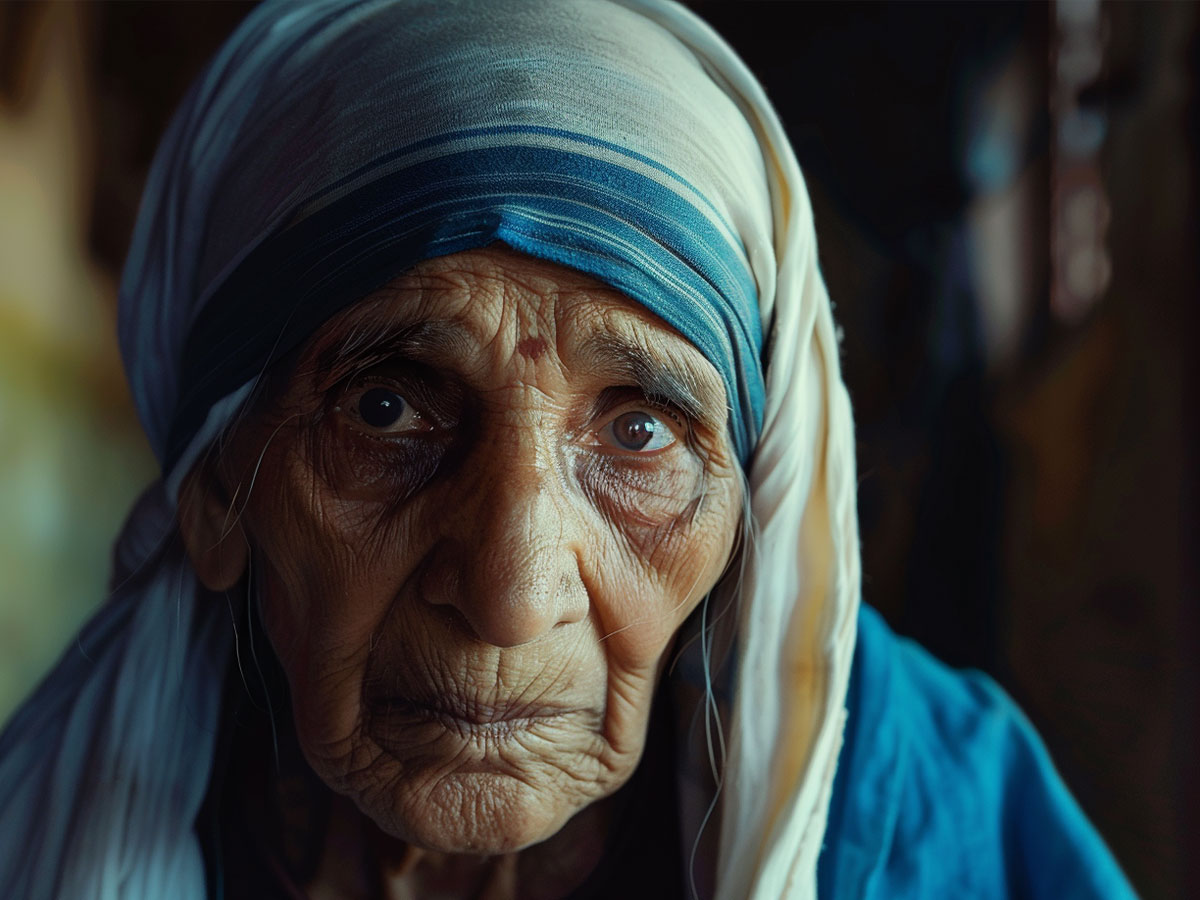
Mother Teresa was a Catholic nun who founded the Missionaries of Charity, a religious organization still in operation today that aims to provide "wholehearted free service to the poorest of the poor." She was officially canonized as a Catholic saint by Pope Francis in 2016, a little less than twenty years after her death.
The AI program was fighting an uphill battle with this image, considering we have so many real-life photos of Mother Teresa to compare it to. And let's just say that these results are a bit...interesting. We understand that Mother Teresa lived to be almost 90 years old, but in this image, it looks like the poor woman is so old she's started to petrify in place!
Jesus

AI gave us a very different version than we expected —closer to what many versions portray him as. With lighter skin, but not white, and long, flowing dark hair and facial hair, this is probably the version many people today envision him as.
With a historical figure as prominent as Jesus, you would think we would have his description solidified a little more at this point—however, the fact that he lived so long ago and we only have so many descriptions to go off of, it can be hard to narrow his features down to incredibly accurate details. So, for now, we give you AI Jesus.
The Buddha
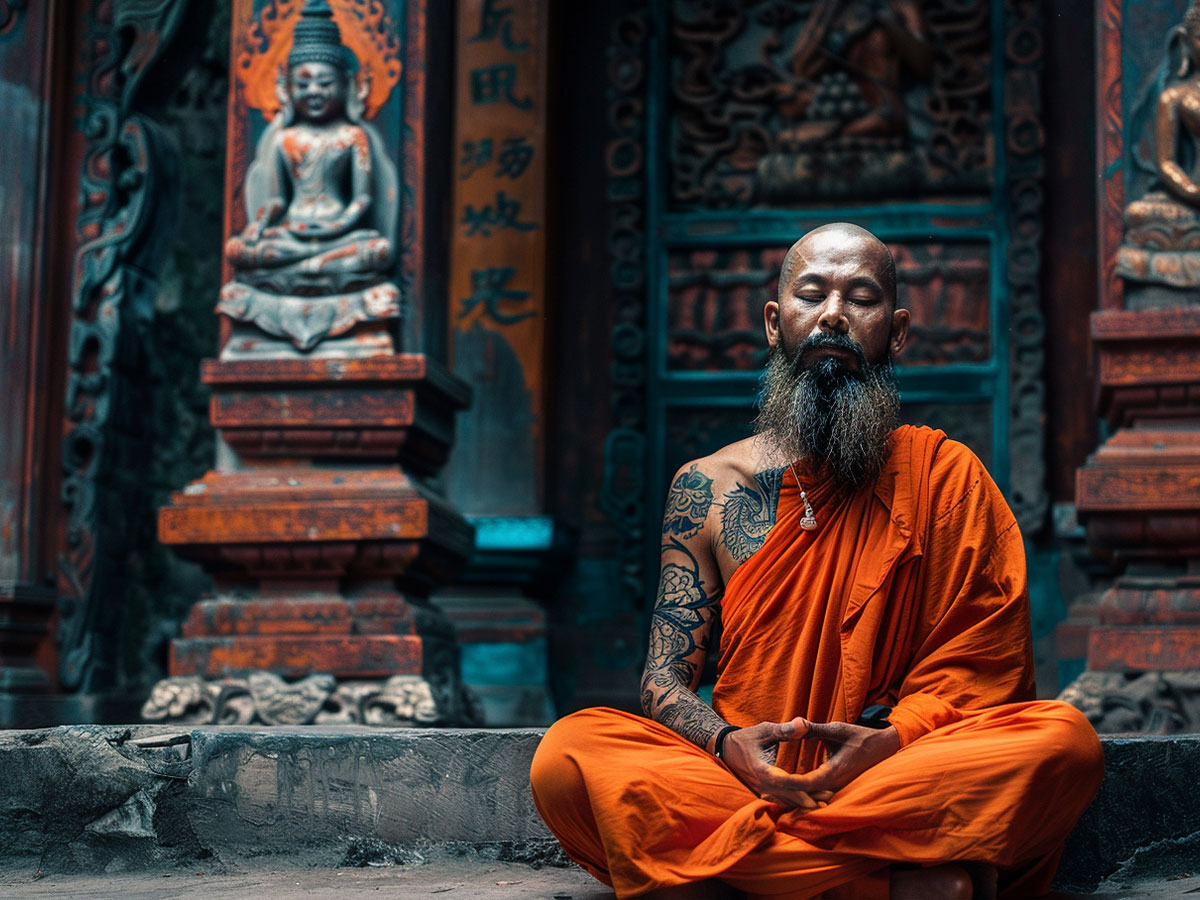
When it comes to Buddha, the first thing that comes to mind are the golden statues. But if we look past that, to the paintings of him, we often see him cross-legged, eyes closed, with a serene look on his face.
In this AI rendition, we see his eyes open, somewhat of a smile on his face, and a much more detailed account of his features. It's very interesting to see the program still found a way to incorporate the gold that is so often associated with Buddha, even if it's just as an aura around his face! As much as we hate to admit it...this Buddha is kind of hot.
Yahweh
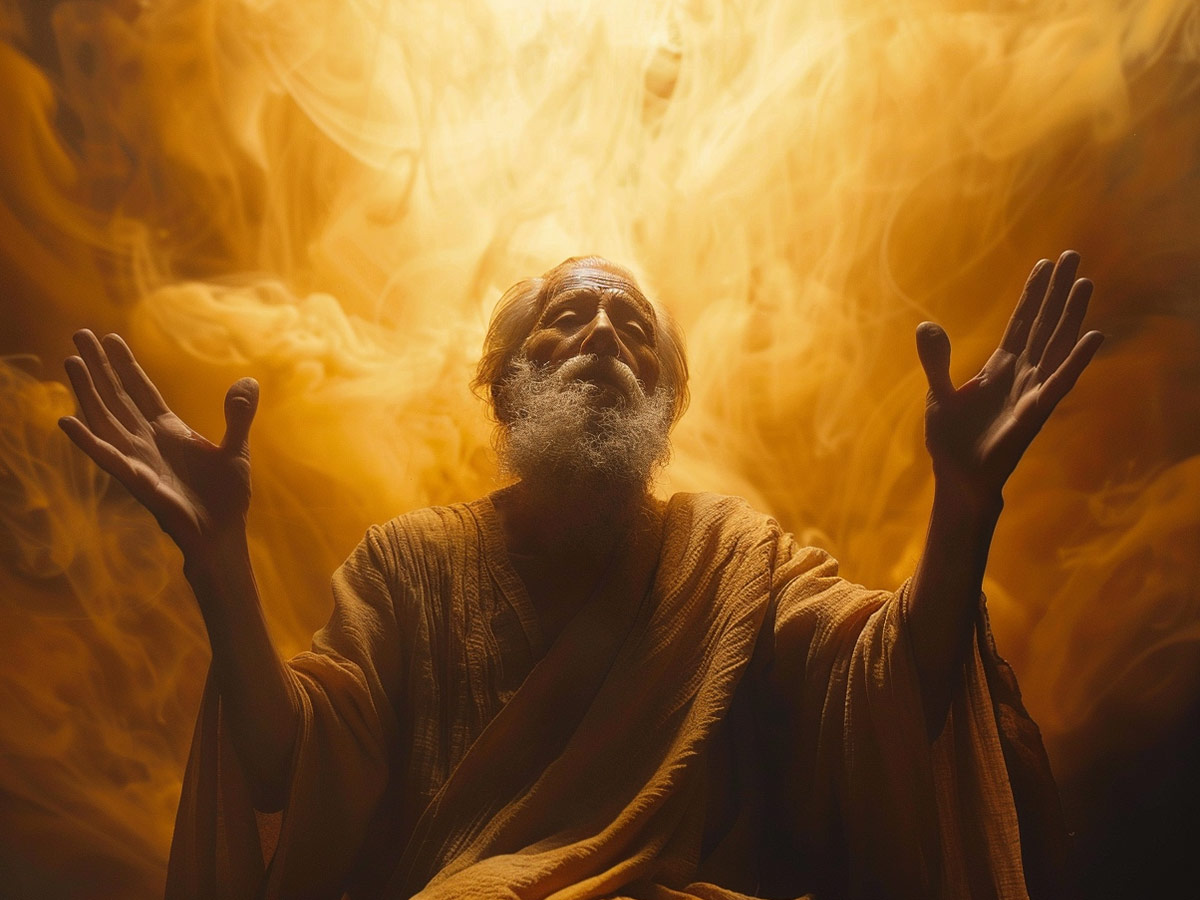
Yahweh is the very foundation of Judaism, a God defined by his actions rather than physical appearance. Unlike many deities in other religions, Judaism warns against creating idols or images of God, which reinforces the idea that Yahweh exists beyond the limitations of a physical body and cannot be fully grasped by humans.
However, in modern Judaism, Yahweh's presence might be depicted with symbolic representations, like a burning bush or radiant, blinding light. According to A.I., he's an elderly, wise man with a white beard, humble clothes, and engulfed in yellow smoke.
Paul the Apostle
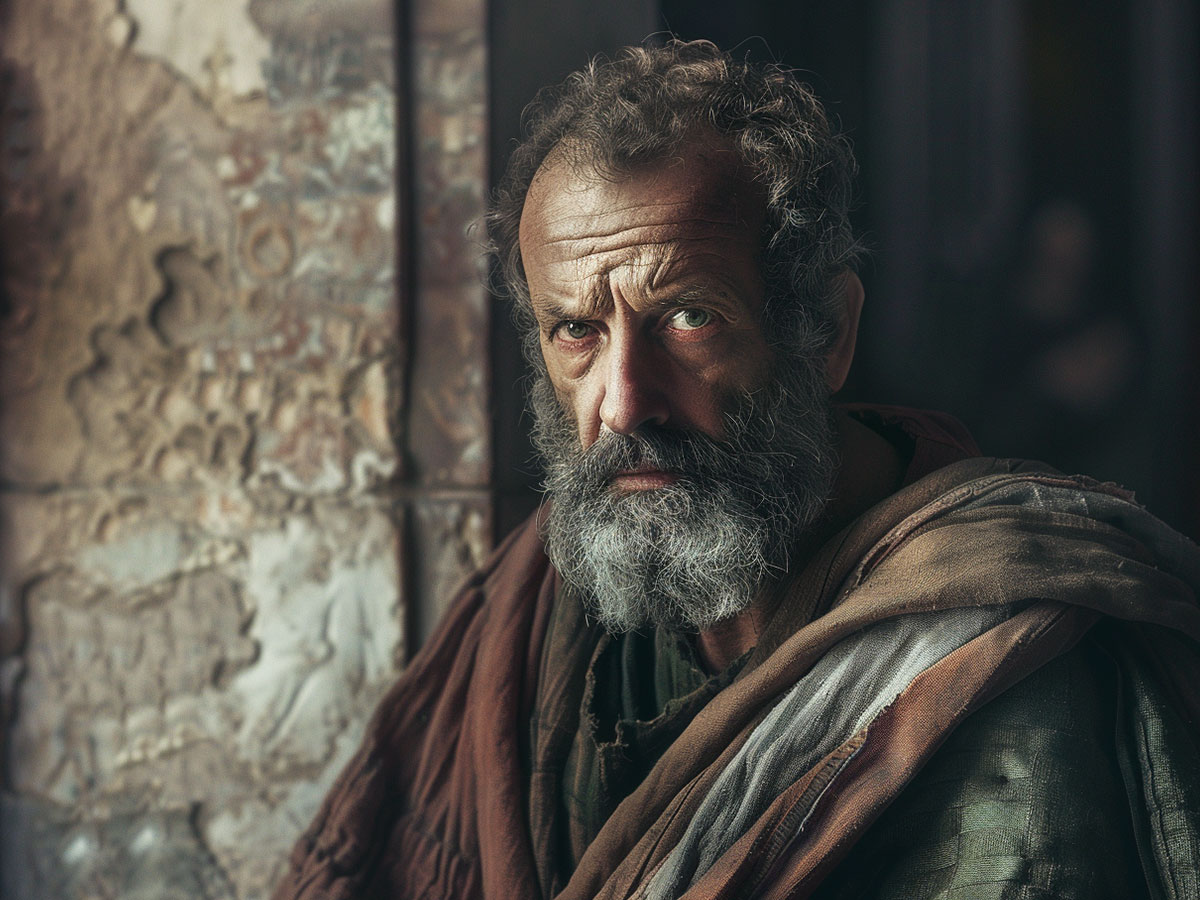
Paul the Apostle is one of the most important figures in early Christianity, and fourteen letters found in the New Testament are attributed to his authorship. According to the Book of Acts, before his miraculous conversion to Christianity, Paul was a pharisee known for his persecution of and violence towards Christians.
Considering that Paul is one of the biggest figures in his religion, this AI-generated image kinda did the man a little dirty. No one else on this list looks remotely as slovenly or chubby as Paul does—if you look closely, it sort of appears that Paul is just standing there with his tongue sticking out! This is definitely one of the funnier results of AI image generation we've seen.
Krishna
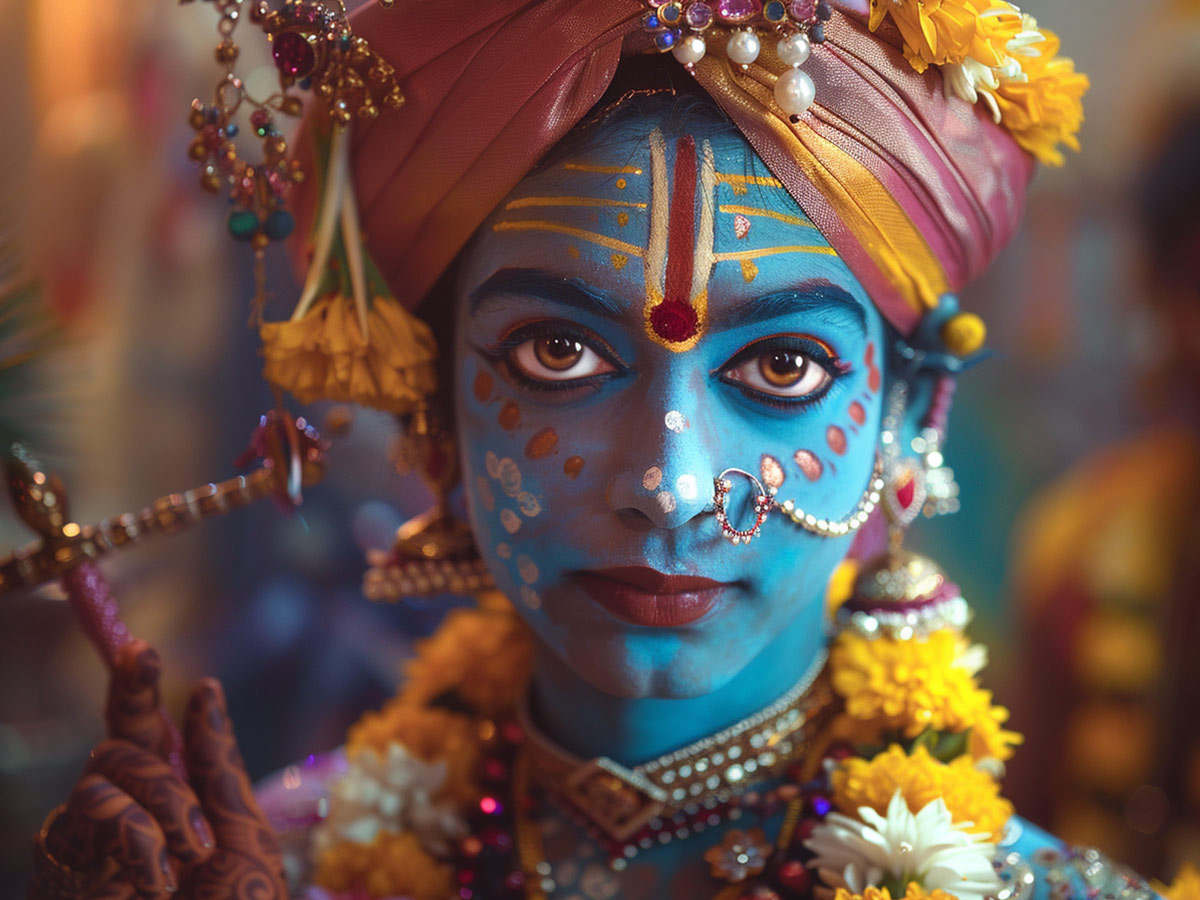
Krishna is a super important god in Hinduism, maybe even the most important one. People see him as a kind of superhero. Some believe he's one of many forms of another god named Vishnu, while others think he's the top dog himself.
Pictures of Krishna are easy to spot: he's usually blue, has a fancy flower crown, and gives really good advice in a famous book called the Bhagavad Gita. Even today, millions of people look up to him for guidance about love, having fun, and doing the right thing.
The Archangel Gabriel

Gabriel has the distinction of being only one of two angels mentioned by name in the Bible. He makes an appearance in the Book of Daniel, but his most famous story happens in the Gospel of Luke when he appears to Mary and tells her she will give birth to Jesus.
Unfortunately for Gabriel, this AI-generated image is a bit short on details. Obviously, we're looking at an angel because he's got giant, white wings But other than that, who this is specifically is anyone's guess! We're not sure why the program went so shadowy for such a bright, celestial being.
Muhammad

Muhammad was an Arab religious, social, and political leader. He is traditionally known as the founder and prophet of the Islam religion. Born around 570 CE in Mecca, there are, of course, no photographs of him, only paintings and portraits, and even those are now frowned upon by certain groups of Muslims.
Thanks to AI, we get a more realistic view of him. His portrayal here looks to be aligned with the majority of his images—dark skin and facial hair, with a serious look on his face. Like many of these images, his eyes just aren't quite right. Unfortunately for him, there were no plastic surgeons in the ancient Middle East!
Gabriel, Again
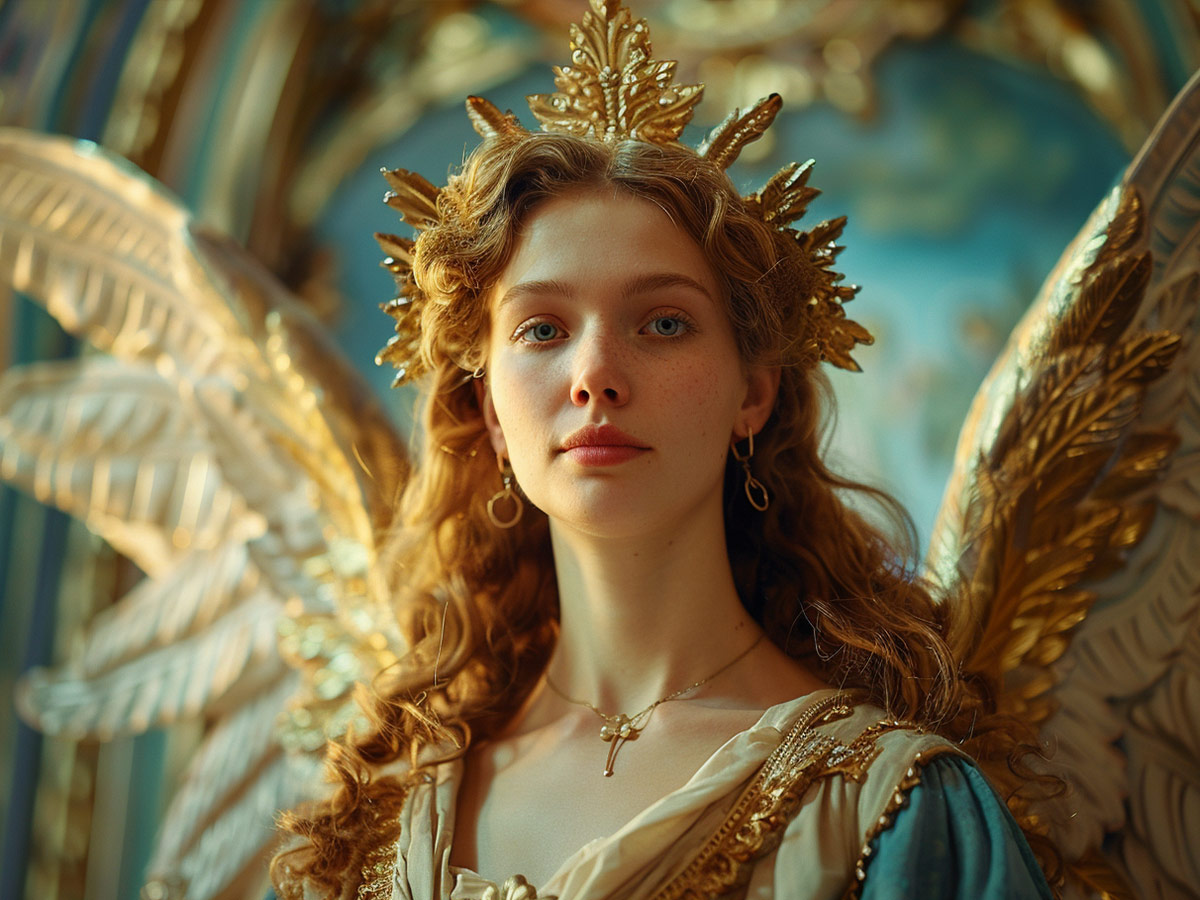
The program took a second shot at depicting the archangel Gabriel and did a much better job this time around. In this image, we see her...?? with the classic halo that shows up in traditional Christian art when depicting Jesus, the saints, or an angel. So far, so good.
However, we're confused why the program decided to make Gabriel look so young and androgynous. When it comes to angels, you don't get many that are more important or powerful than Gabriel, so we always kind of imagined him as a buff dude. However, maybe it's a mistake to think of angels in human terms at all!
King David

David is one of the most well-known kings of ancient Israel and is considered to be a major figure in the three Abrahamic religions—Judaism, Christianity, and Islam. The two biggest stories associated with him are his defeat of the giant Goliath as a boy and his adulterous affair with Bathsheba while he was king.
The AI program that created this image of him clearly had lots of thoughts about the famous king's hair. His hairline has receded so far back that it's probably time for the monarch to consider just shaving it all off. In contrast, his facial hair is definitely on point in this image!
Hera
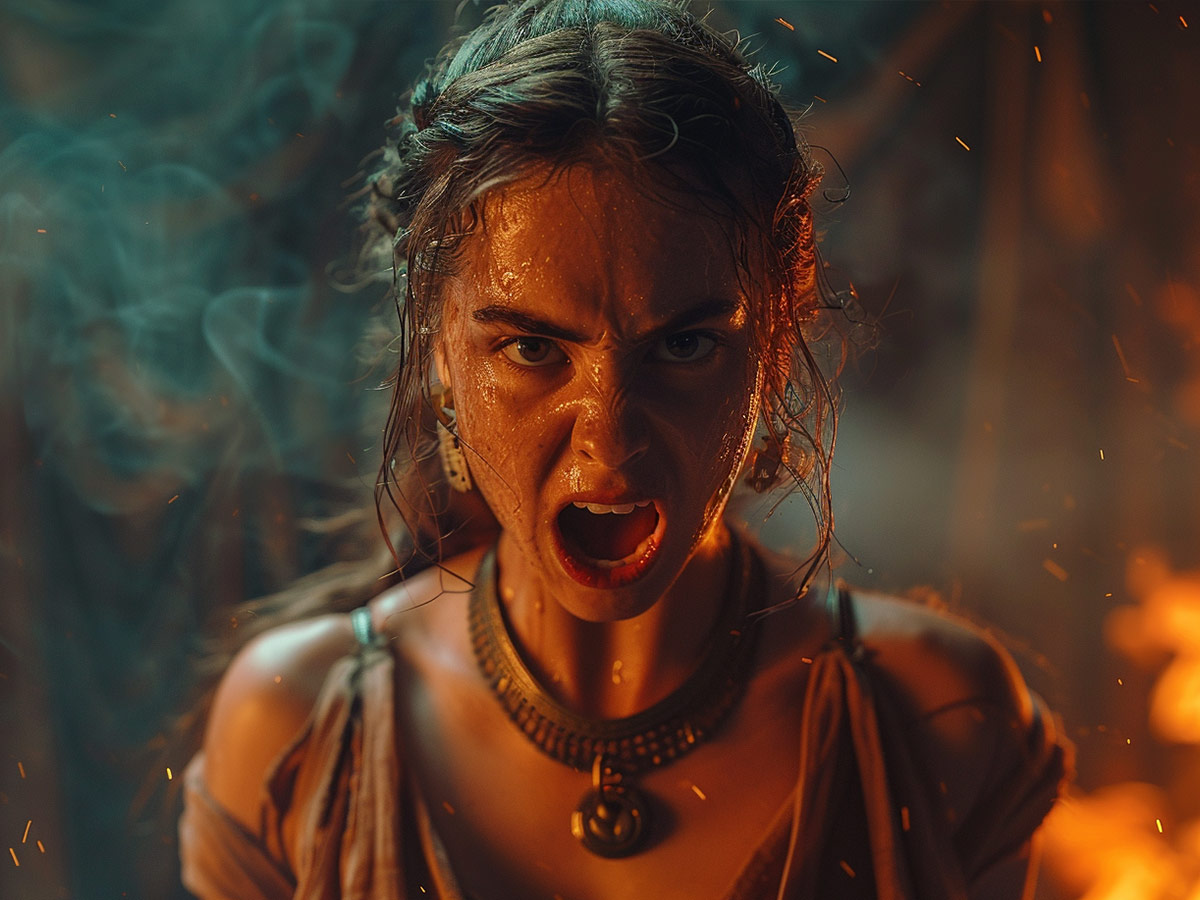
According to ancient Greek mythology, Hera is the long-suffering wife (and sister—don't ask) of Zeus himself. She is considered to be the goddess of both childbirth and marriage, which is kind of rich, considering her husband cheated on her all the time. Because of all these affairs, Hera is known to be a very jealous and vengeful goddess.
The woman in this AI-generated image is definitely beautiful enough to be a goddess, but we're not sure that she looks like we imagined Hera. Considering she's the goddess of childbirth, we assumed she'd look a little more motherly. And, considering that Zeus can't keep it in his pants, we assumed she'd look a little more angry too.
Peter the Apostle
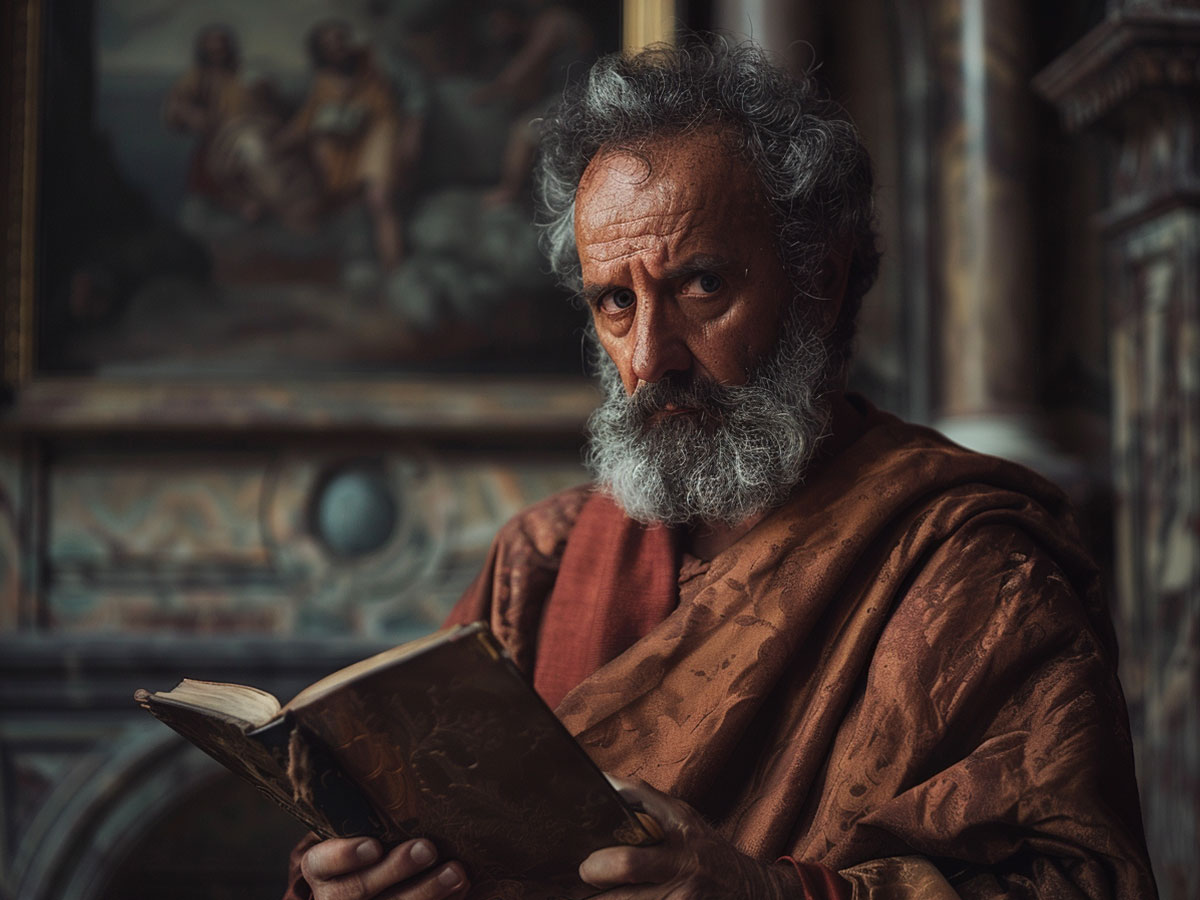
In the Gospels, Peter is one of Jesus' twelve disciples and often features frequently in the stories from these books. Unfortunately for Peter, his biggest claim to fame is denying Jesus on the night of his crucifixion after repeated assurances that he would do no such thing. Peter is also considered to be the first bishop of Rome, according to Catholic tradition specifically.
Considering that no one actually knows what Peter looked like (or if he existed at all), the AI program's guess is as good as anyone's! And we have to say that this image isn't half bad by AI standards—all of Peter's body parts are in the right place and are the right shape and size, which is not always something you can say about these photos!
Jezebel
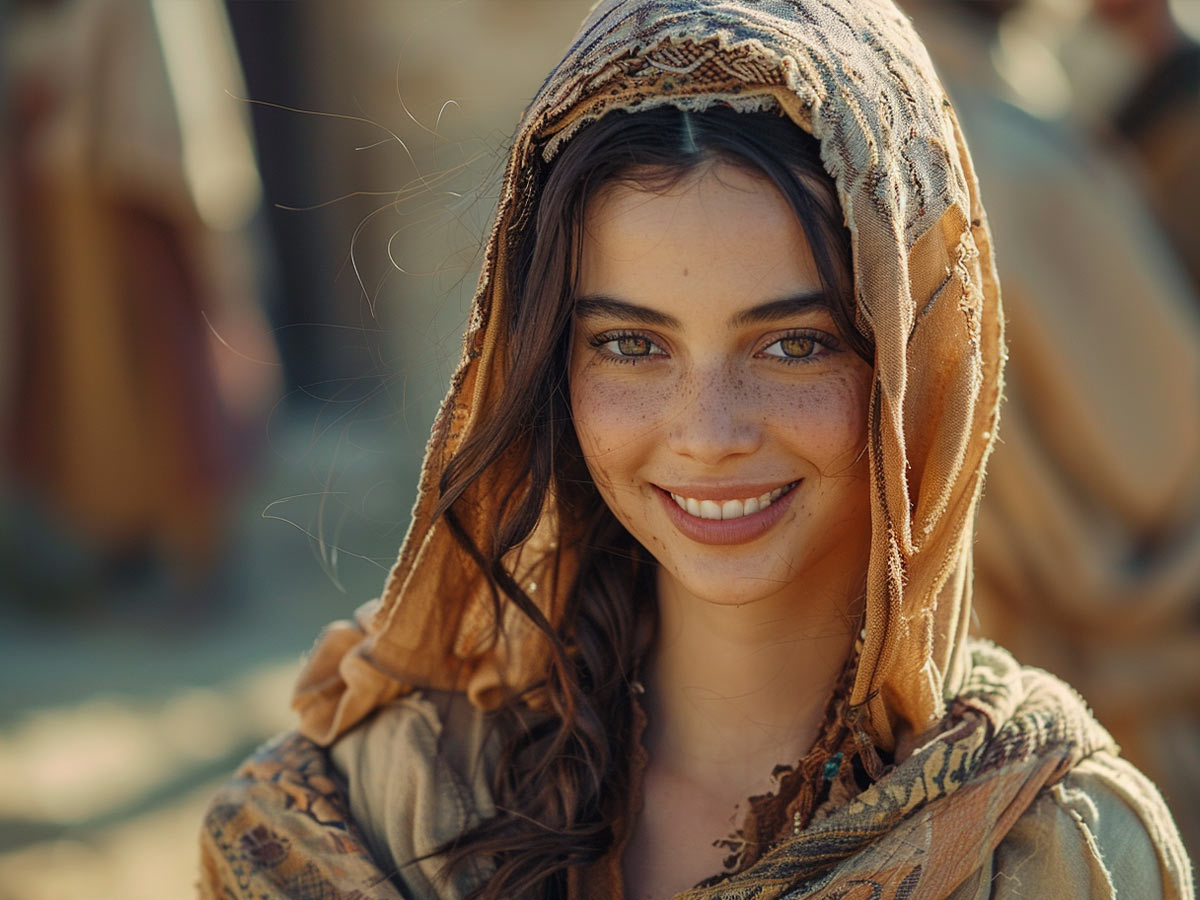
Jezebel is such an infamous character in the Bible that her name has come to be used as an insult against women thought to be deceitful or excessively promiscuous. She appears in the Book of Kings as the foreign wife of king Ahab. When she ties the knot, she brings the worship of Baal and Asherah into the kingdom of Israel and eventually gets tossed out of a window because of it.
Honestly, we're kind of disappointed with her depiction in this AI-generated image. She's such a larger-than-life personality that we were hoping for something a little more than just a sweet-looking girl. But, we suppose that's the point... Good looks to lure you away from God!
Noah

Noah is a prominent figure in Judaism, Christianity, and Islam alike, and even outside of those religions, many people are familiar with his story found in the Bible. According to the Book of Genesis, Noah was commanded by God to build an ark in advance of a flood that would kill the rest of humanity.
Unfortunately, the AI really missed the mark with this one, at least if you want to stay true to the religious traditions associated with Noah. Sure, this guy looks like someone you might find in the Middle East. However, according to tradition, Noah lived to be 950 years old and built the ark at around 600. This guy is way too young to be centuries old!
The 14th Dalai Lama

Within Tibetan Buddhism, the Dalai Lama is considered their spiritual leader. According to tradition within the religion, each new Dalai Lama is a reincarnation of Avalokitasvara, the Bodhisattva of compassion. Their current leader, Tenzin Gyatso, is Dalai Lama number 14 and was born in 1935.
Once again, the AI program was at a disadvantage for this one because the current Dalai Lama is not an ancient figure, and there are a ton of real-world photos to compare this one to. That being said, the program did a great job depicting him accurately. We're not sure why the skin around his eyes is so wrinkly compared to everywhere else, but other than that, it nailed him!
Jesus, Again

I know, probably not what you expected! Certainly not the face that's hanging up in churches or your grandma's house. But according to AI, Jesus probably looked more like this than your hippie neighbor.
I mean, it makes sense. For one, just think about where he was born. Do you really think he came out with pale, white skin? Also, this AI program was fed descriptions of Jesus taken from the Bible, so, who are we to argue with a non-biased technology? I give you, Jesus.
Abraham

Abraham is the common Hebrew patriarch of the Abrahamic religions, including Judaism, Christianity, and Islam. He's known for the depth of his faith and unquestioning obedience to God—even to the extent of sacrificing his son Isaac. Thankfully, he is not asked to sacrifice his son in the end, a ram is substituted.
Abraham is commonly depicted as an old man with a long white beard and long white hair to match. AI seems to think of him as an old man with white facial hair who likes to keep it trimmed up. Clothing-wise, AI and other portrayals are consistent—he is shown wearing robes and head coverings.
Ares
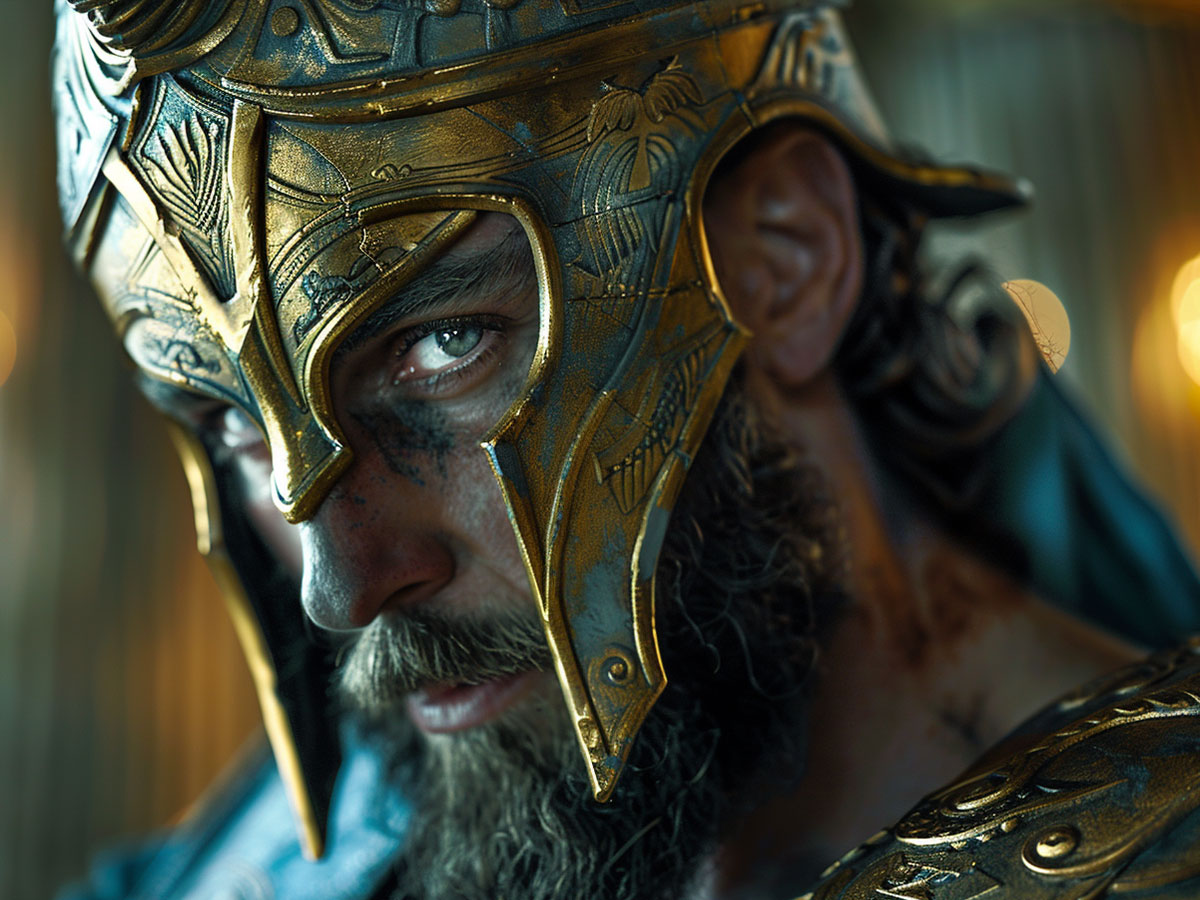
In Greek mythology, Ares, along with his sister, Athena, was a god of war. Specifically, he was often associated brutality and bloodlust, which makes him sound like a real fun guy. Ares actually doesn't have as many myths as some of the other major Greek gods, and when he does show up, he's often suffering some sort of humiliating military defeat.
This AI-generated image of Ares is actually pretty interesting compared to some of the others. On the one hand, he doesn't feel very Greek to us—he looks more like a knight straight out of King Arthur's court. However, we could definitely believe that this fearsome-looking fighter dude was a god of war.
Joseph

In the New Testament, while God is considered to be Jesus' true father, Joseph, the husband of Mary, is still considered to be his earthly father. We actually don't get a lot of stories about Joseph in the Bible, aside from the one where he is understandably confused after an angel tells him that his wife is pregnant and the baby isn't his.
There aren't a ton of artistic traditions regarding Joseph, so this guy that the AI program generated may as well be him. Like most of the people that AI currently render, we've got some serious questions about his eyes and the skin texture on his neck. It's not the most inspiring image ever produced.
Elijah
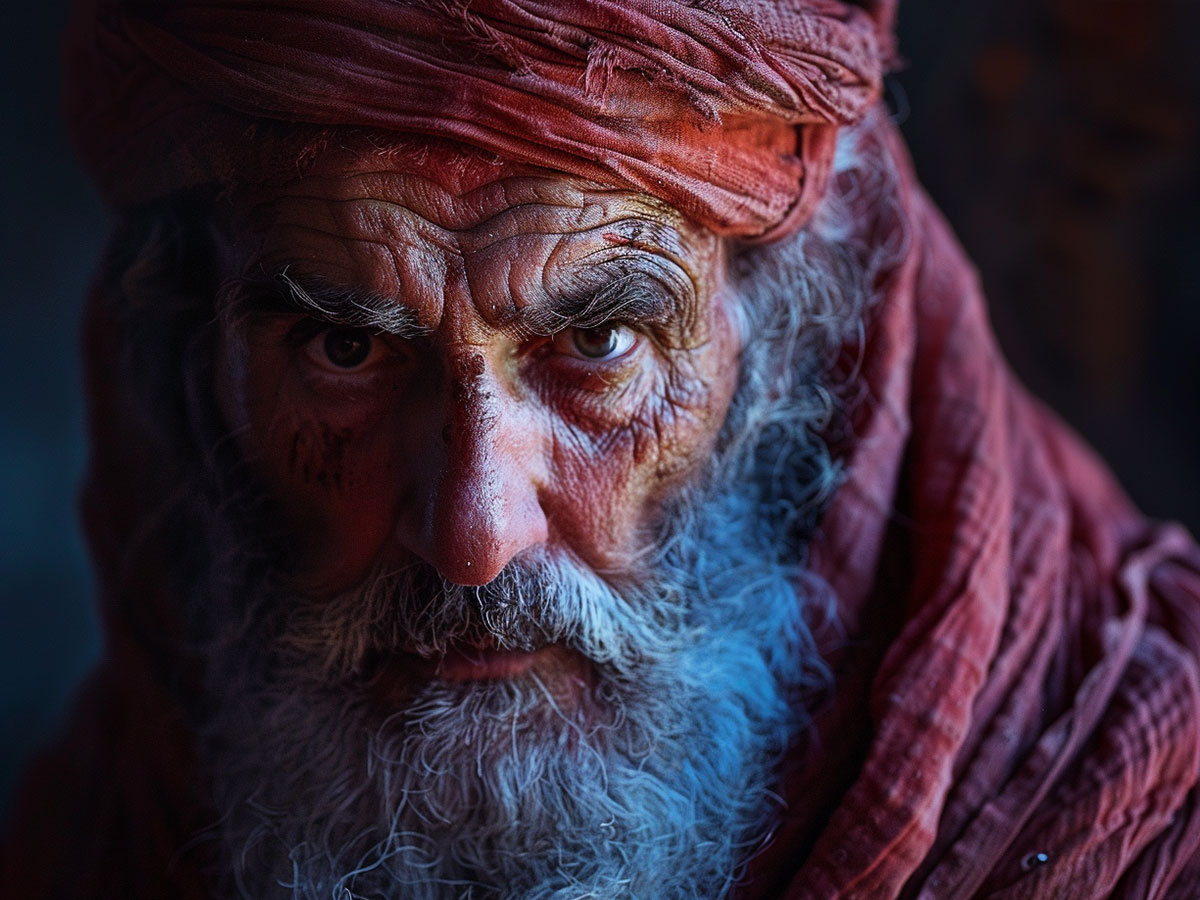
Elijah is one of the most important Israelite prophets in the Hebrew Bible and the Christian Old Testament; however, he's also one of the few that doesn't have a book named after him. His narratives take place in the Book of Kings, and he is one of only two people mentioned in the Bible to be assumed into Heaven before death.
We hope this isn't sacrilegious, but Elijah is looking mighty fine in this AI-generated image. We obviously have no way of knowing what he really would have looked like, but he looks like he would be a hot commodity on the ancient Israelite dating scene. Unfortunately for us, Elijah was also celibate, according to tradition.
God
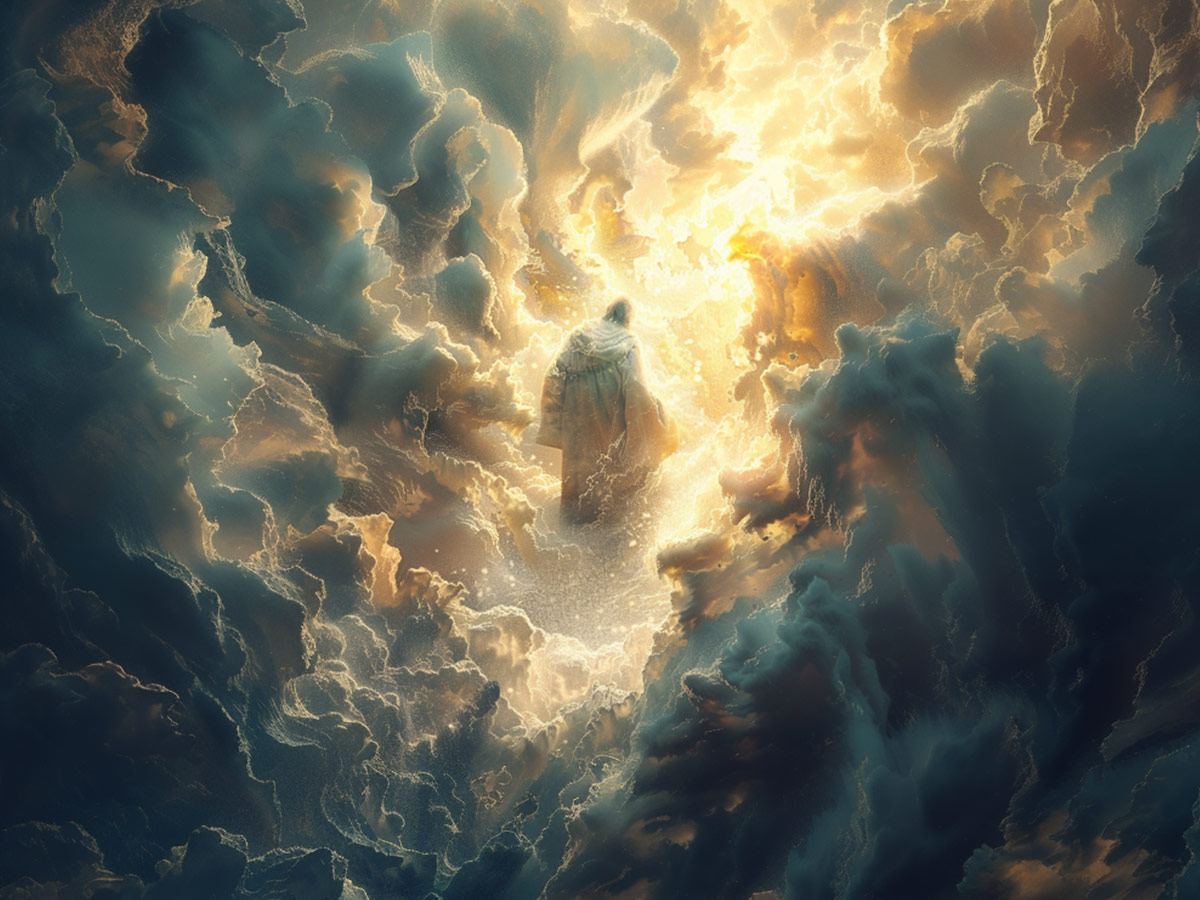
Obviously, there's no figure in the Bible more important than the big guy himself. God is a recurring theme in basically every Bible story, and yet we don't get many physical descriptions of him. In fact, there's one chilling passage in the Book of Exodus where Moses asks to see God, and he replies with, "You cannot see My face; for no man shall see Me, and live."
Because of this, the AI program had a lot of wiggle room and opportunity for creative liberties when depicting God. However, it went a surprisingly traditional route and depicted him as a bright light rising on the horizon. It's not the most groundbreaking image, but it is sufficiently generic and reverent enough that no one would probably throw a fit about it.
Confucius

Confucius wasn't a king or a warrior, but his ideas about how to live a good life are still super important today, and he believed respect was vital. He thought that kids should respect their parents, adults should respect their elders, and everyone should respect those in authority.
Confucius lived from 551 to 479 BCE, and descriptions depict him as an older man during his time as a teacher and philosopher. He likely wore traditional clothing of the Zhou Dynasty, which consisted of long robes made of silk or hemp, secured with a belt at the waist. Most depictions show him with a long beard, possibly white or streaked with grey in his later years.
Shiva
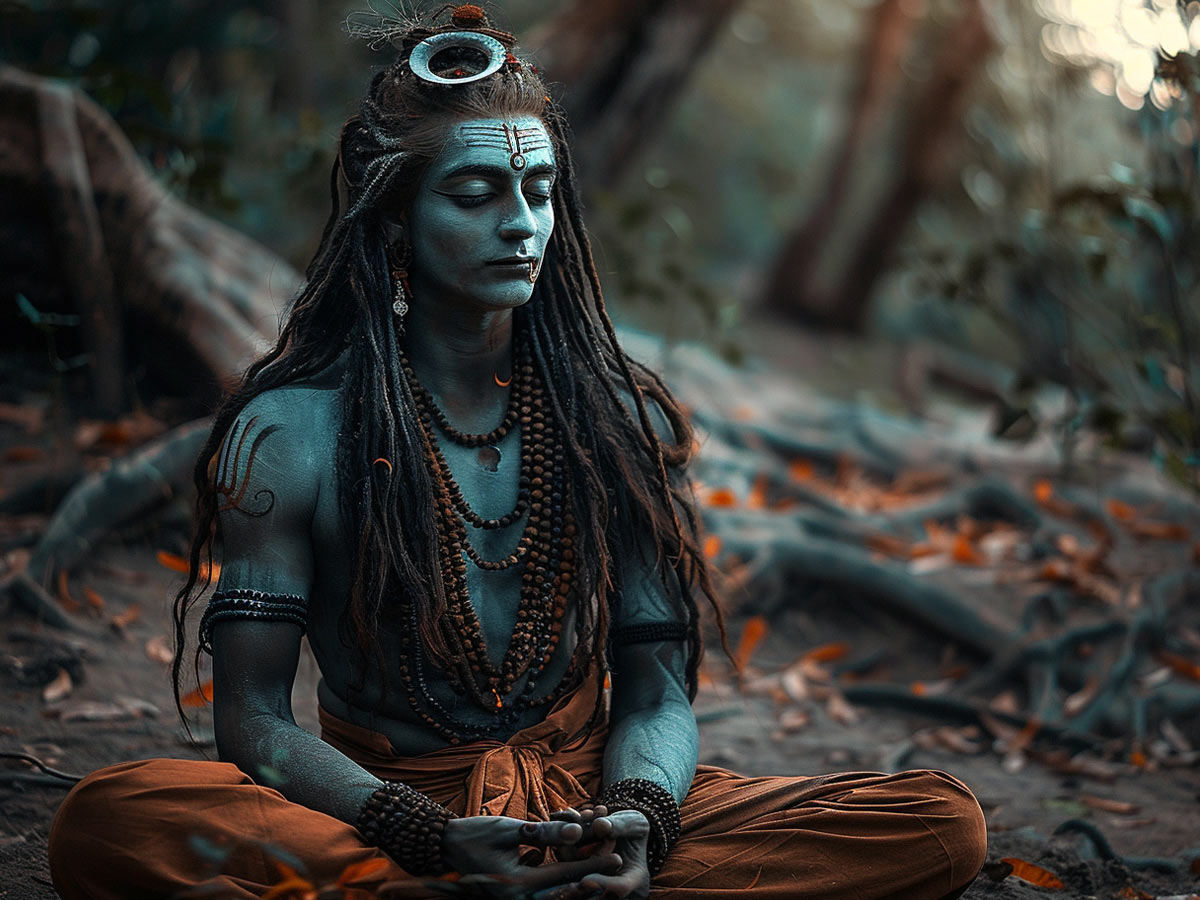
In the world of Hinduism, Shiva is one of the major gods and known as the destroyer who "wipes away the old to make room for the new." He's also the preserver who maintains balance in the universe. Not to mention he's the creator who starts the cycle all over again!
Shiva is often pictured as a powerful dude with long, flowing hair that's sometimes braided. He has a third eye in the middle of his forehead, symbolizing his wisdom and ability to see beyond the ordinary world. He might wear a tiger skin and carry a trident, a powerful weapon. But Shiva can also be gentle, as depicted in this image of him meditating.
Job
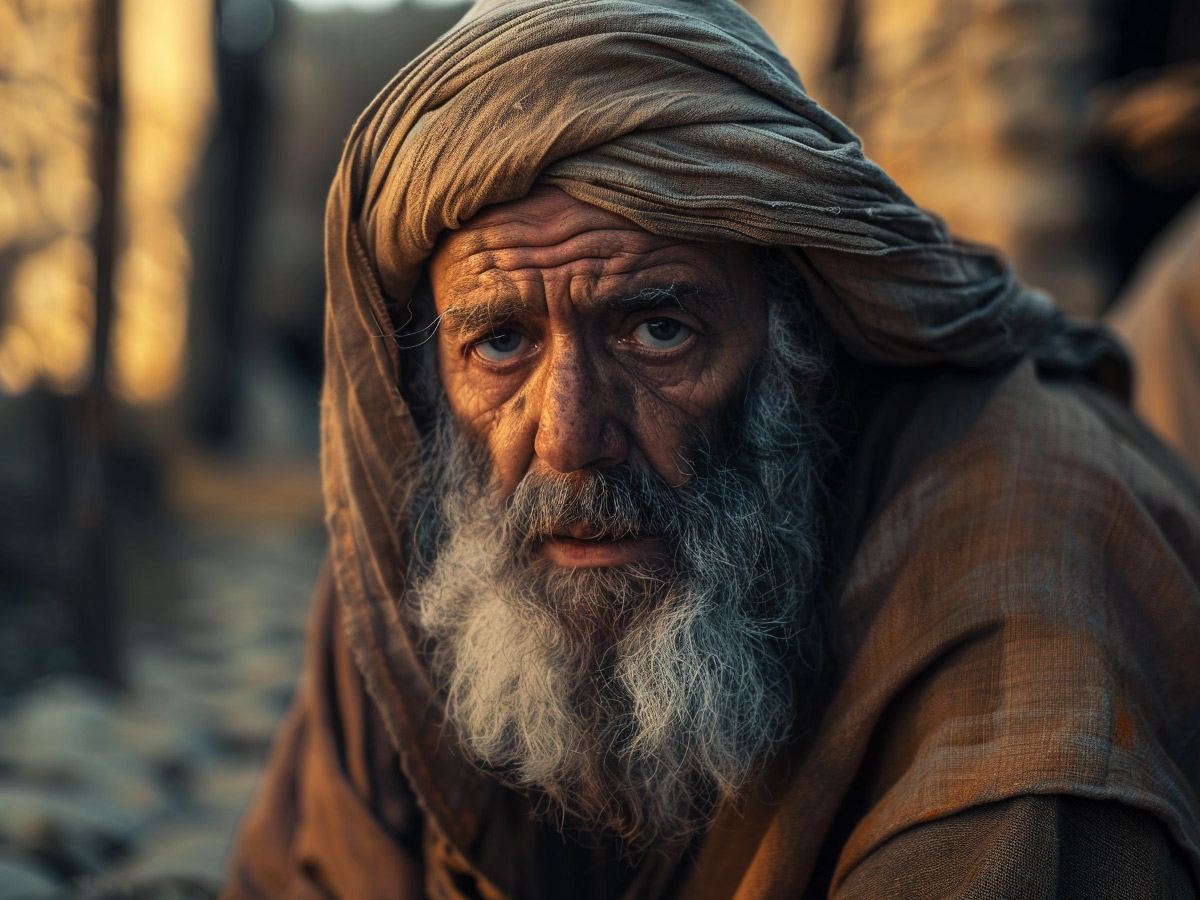
The Bible tells the story of Job, a wealthy man known for his good character. Imagine a guy living a comfortable life with a big family and lots of possessions. That's Job! The Bible doesn't describe his physical appearance, so we can't say what he looked like, but A.I. did a decent job depicting a haggard, faithful old man.
Satan, a kind of challenger, convinces God to see if Job will stay faithful even if he loses everything. So, Job suffers a series of misfortunes, including losing his wealth, his children, and even his health. Ultimately, God rewards Job for his perseverance and restores his blessings.
Lilith
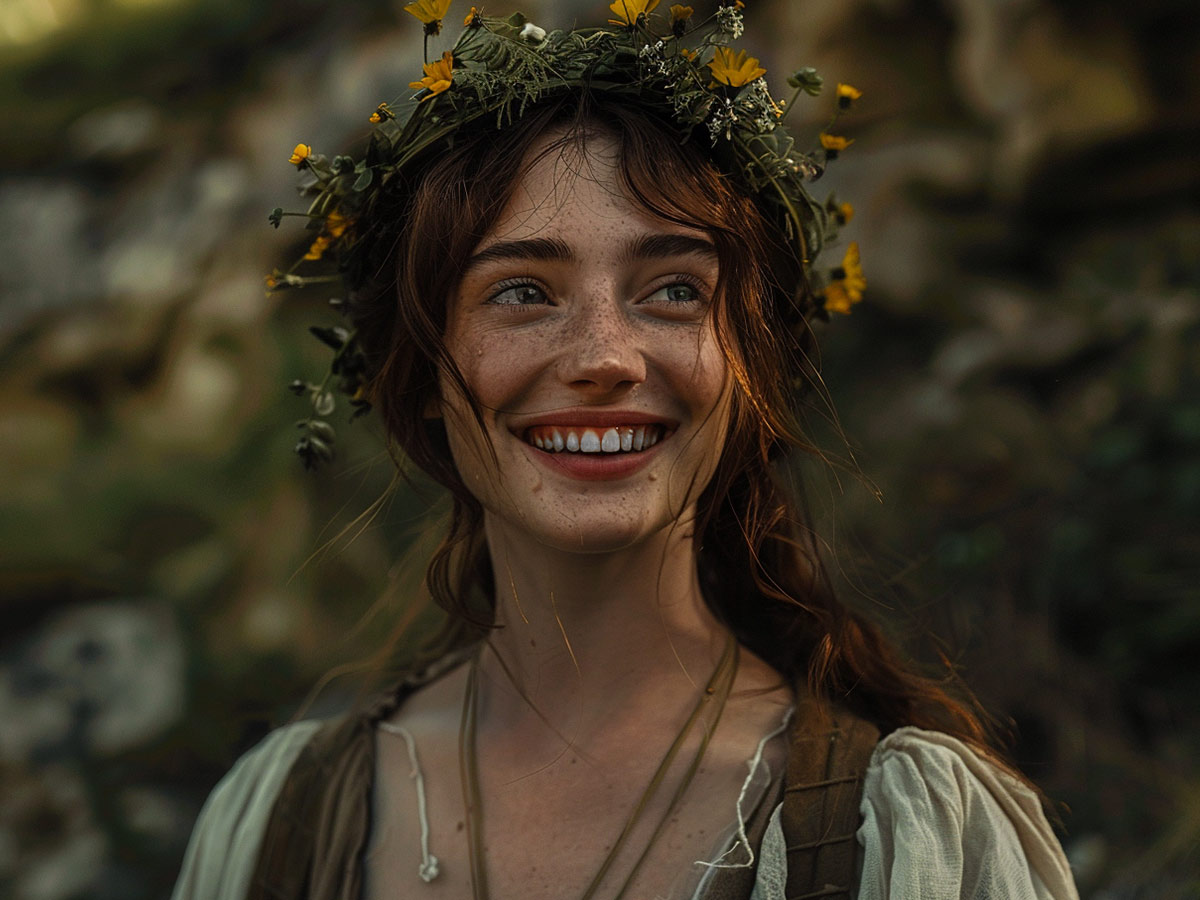
The Bible itself mentions Lilith only once, leaving much room for mystery and interpretation. Traditionally, she wasn't seen as a biblical figure except as "a creature dwelling in desolate places." However, Jewish folklore paints a different picture.
Lilith is claimed to be Adam's first wife before Eve. They clashed because she refused to be submissive. Lilith left Eden, becoming a powerful demon associated with the night and sometimes blamed for misfortunes. Depending on the story, Lilith can be monstrous with wings and a serpent's tail or a seductive beauty with flowing hair (obviously, A.I. thinks she's the latter). Today, some see Lilith as a feminist icon.
Isaiah

Isaiah was a prophet who lived in the kingdom of Judah around 700 BCE. Imagine a powerful speaker, kind of like an outspoken truth-teller, calling out for people to follow God's teachings. The Bible doesn't describe Isaiah's physical appearance, but we imagine he looks as wise as A.I. depicts him here.
Isaiah warned the Israelites about their wrongdoings and prophesied both judgment and hope for the future. He spoke of a coming Messiah, a savior figure, who would bring peace and justice.
Jeremiah

Jeremiah is a fascinating Biblical figure known as the "Weeping Prophet." Imagine a young man, reluctant at first, but ultimately a courageous speaker for God. He does look awfully afraid in this picture! Living in Judah around 600 BCE, Jeremiah delivered some tough messages.
He warned the people about their disobedience and predicted the destruction of Jerusalem... Needless to say, he wasn't always popular. But he also offered messages of hope, promising that God would eventually restore his people. The Bible is filled with his heartfelt pleas and poetic expressions of faith.
Judas
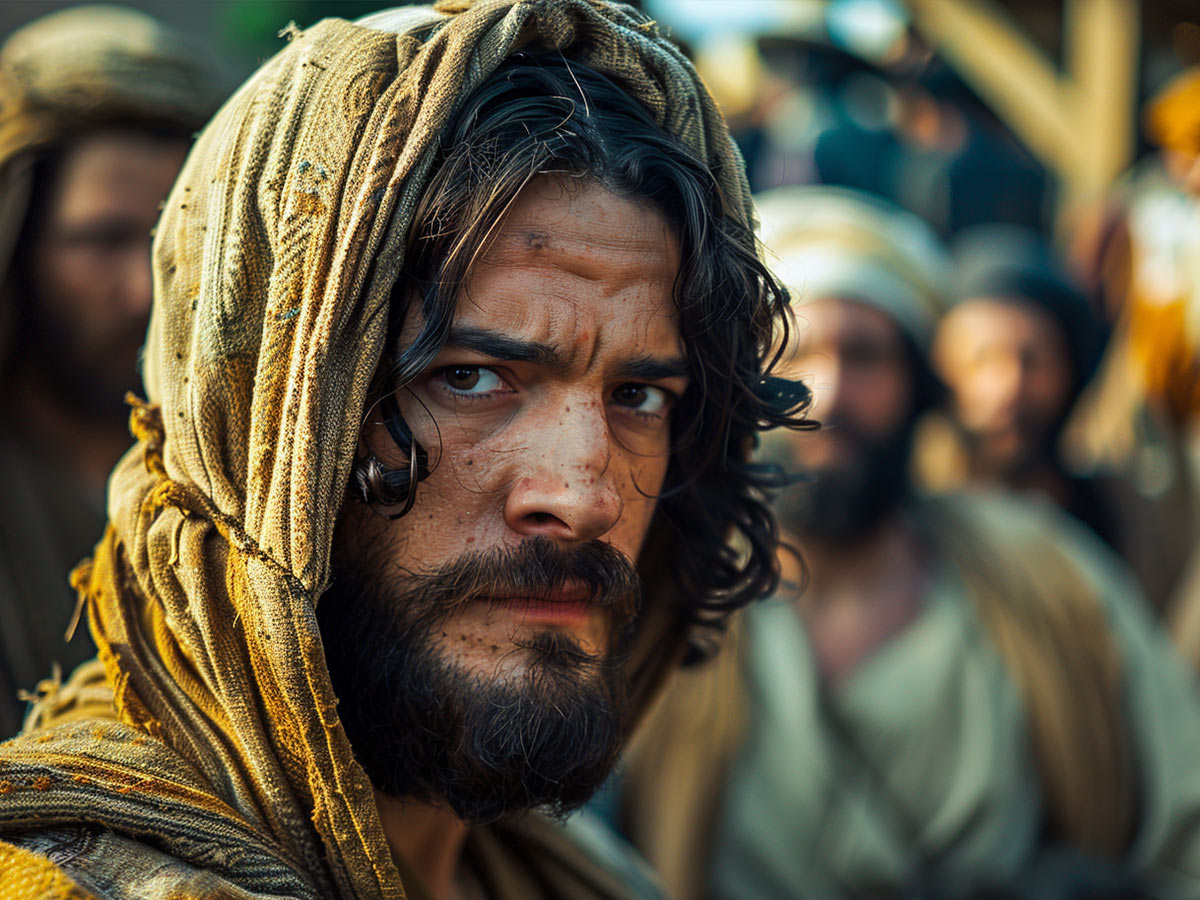
If there's one villain from the Bible that almost everyone knows, it's Judas. This traitor was originally one of Jesus' twelve disciples, but he betrays his leader when he lets the Romans know where Jesus will be so that they can arrest and eventually crucify him. Judas eventually kills himself over his evil deed, and he is replaced as an apostle by Matthias in the Book of Acts.
This AI program better watch itself, or it's liable to find itself accused of heresy! In this image, Judas is depicted as having a halo of light, which is a symbol that is typically reserved only for Christ himself or other important saints in Christian art. Needless to say, traitors normally don't receive such an honor as this.
Noah, Again

The AI program took another shot at depicting Noah, and this one seems to have got things a bit better. This guy is definitely much older-looking than the first, which is more in line with Noah. However, older as he may be, we're skeptical that even this guy has lived for hundreds of years.
We're not sure why Noah is cueball bald in this image, but it's not terribly out of place. He had a full forty days to kill on the ark, so maybe he spent all of it trying out new and different hairstyles. AI has done worse than this decent depiction of Noah!
John the Baptist

John the Baptist, a key figure paving the way for Jesus, was a prophet known for baptizing new followers of Christ in the Jordan River. A preacher living in the desert, calling for repentance and preparing people for the coming Messiah (Jesus).
living in the wilderness might have meant John had a long beard, dark skin, and a strong physique. Portrayals often show John with a serious or determined look, reflecting the urgency of his message. Here, he's depicted in a very Christ-like manner, clad in a crown of thorns, which points to the gospel.
Aphrodite

Aphrodite — the Greek goddess of love, beauty, pleasure, and procreation — was born from seafoam or emerged from a split-open seashell, symbolizing her connection to beauty and birth. She's often associated with doves, swans, and seashells, and is notorious for her irresistible charm, especially when used to manipulate the love lives of mortals and gods.
Aphrodite is universally recognized as the epitome of female beauty. Descriptions and artistic portrayals depict her with flawless skin, captivating eyes, and a perfect figure. In paintings, she's often depicted wearing flowing white gowns, blonde hair, precious stones, or adorned with a magical girdle. According to A.I., she's a brunette with flowers woven throughout her curls.
Athena
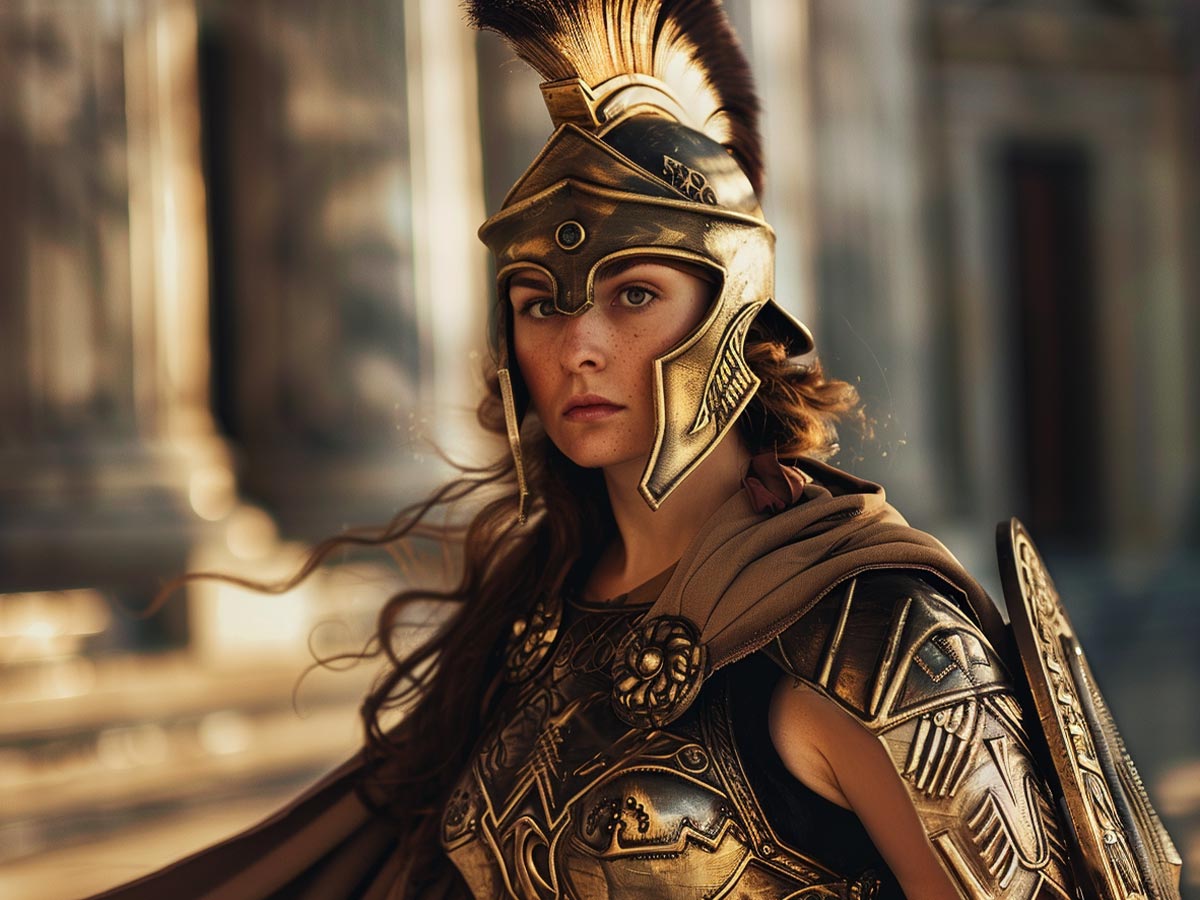
Athena (the Greek goddess of wisdom, warfare, and handicraft) burst forth fully formed from the head of Zeus, solidifying her place as his favorite child. Her influence wasn't limited to battlefields. Athena championed skilled craftwork, strategic thinking, and justice, even offering guidance to legendary heroes like Odysseus.
A.I. depicts Athena as a strong woman clad in gleaming armor, wielding a spear and shield, perhaps with an owl adorning her helmet. Her stern expression reflected a sharp intellect and strategic mind.
Pontius Pilate
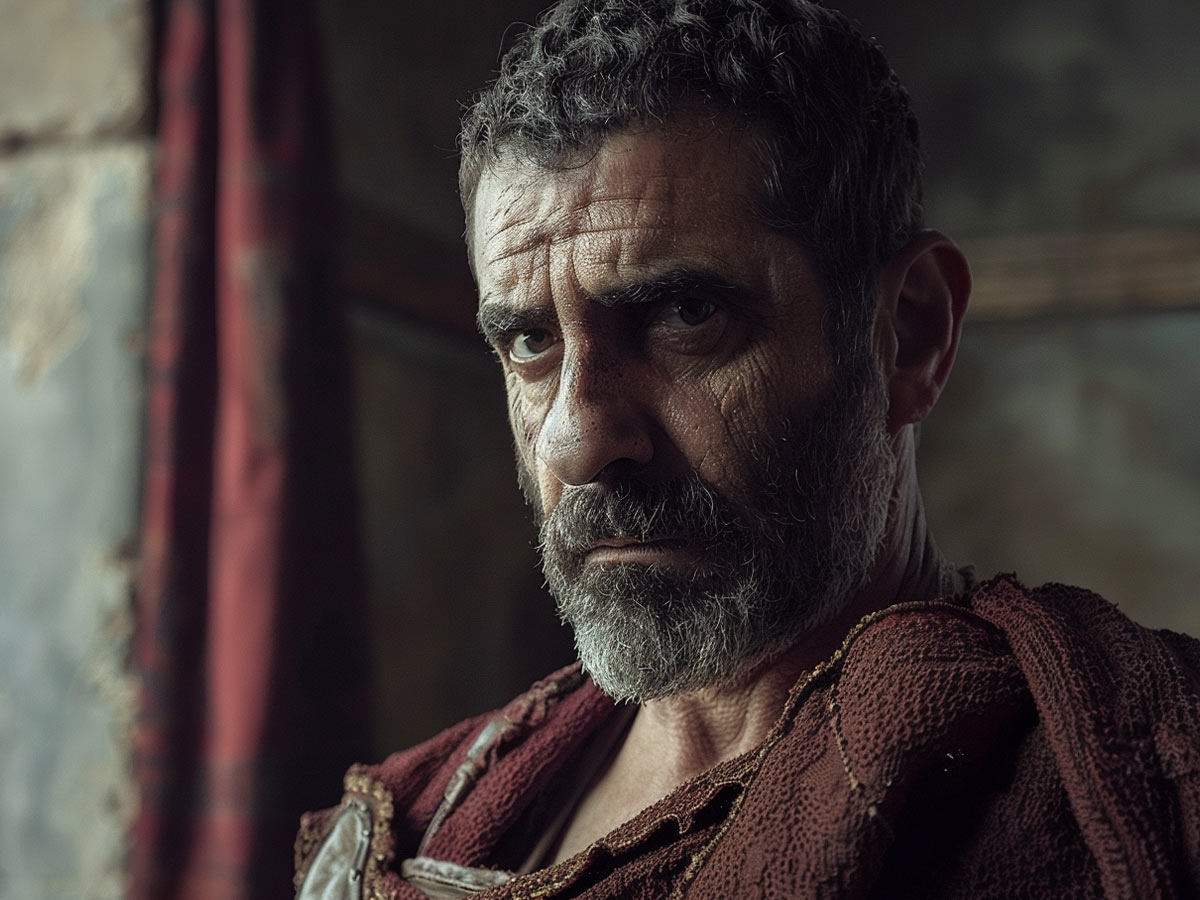
Pontius Pilate, forever linked to the trial and crucifixion of Jesus, was the Roman prefect of Judea from 26 to 36 AD. Descriptions of his physical appearance rely on historical context and artistic interpretations, and A.I. definitely took a few pointers from artists.
Pilate likely belonged to the upper class of Roman society, making him a well-dressed man with short dark hair and a beard. Some Roman governors had military experience. Pilate might have possessed a more muscular build, and sculptures portray Pilate as stoic, conflicted, or even remorseful.
Raphael

Unlike many Biblical angels who are shrouded in mystery, Raphael is briefly described in The Book of Tobit, which holds significance in some Catholic traditions. This archangel, known as a healer and protector, takes human form to guide a young man named Tobias on a journey. He's handsome, well-dressed, and hospitable.
Artistic interpretations often build upon this description, depicting Raphael with travel gear like a staff, a reminder of his role as Tobias' guide. In some cases, artists might add wings or a subtle glow to hint at his angelic nature. Here, A.I. totally thinks Raphael is some angelic prince!
Lucifer
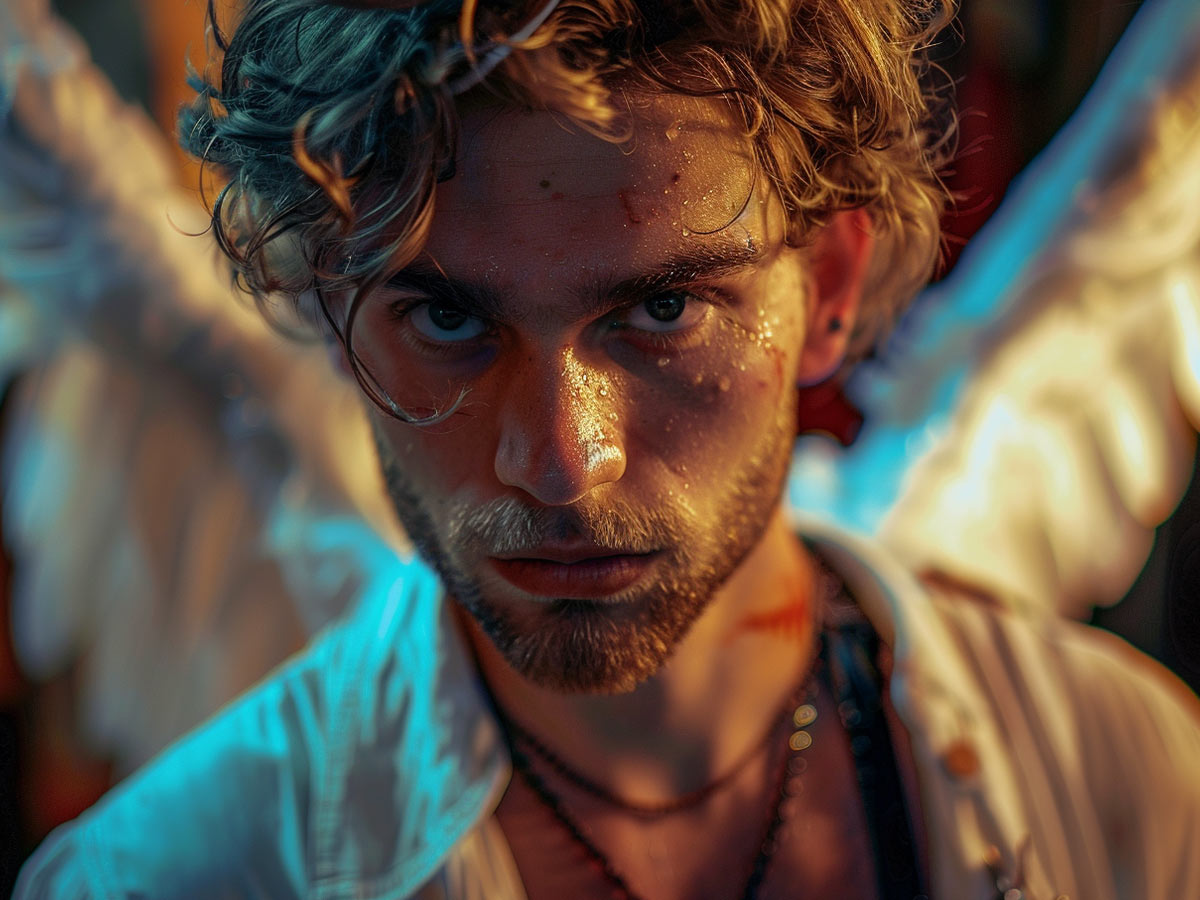
Our familiar image of Lucifer as a beautiful angel who rebelled against God comes from later interpretations and literature, most famously John Milton's Paradise Lost. Artistic depictions based on this tradition often show Lucifer in two forms: before his fall, he's an angel blessed with stunning beauty. After his rebellion, he's transformed into a monstrous figure with horns, a tail, and a fearsome appearance.
Contrary to popular belief, the Bible doesn't depict Lucifer as a fallen angel. The name "Lucifer" appears only once in Isaiah, referring to a Babylonian king, not a heavenly being. The Bible does portray a figure who opposes God, but this figure is never referred to as Lucifer. The Bible itself focuses more on the relationship between God and humanity.
Herod Antipas
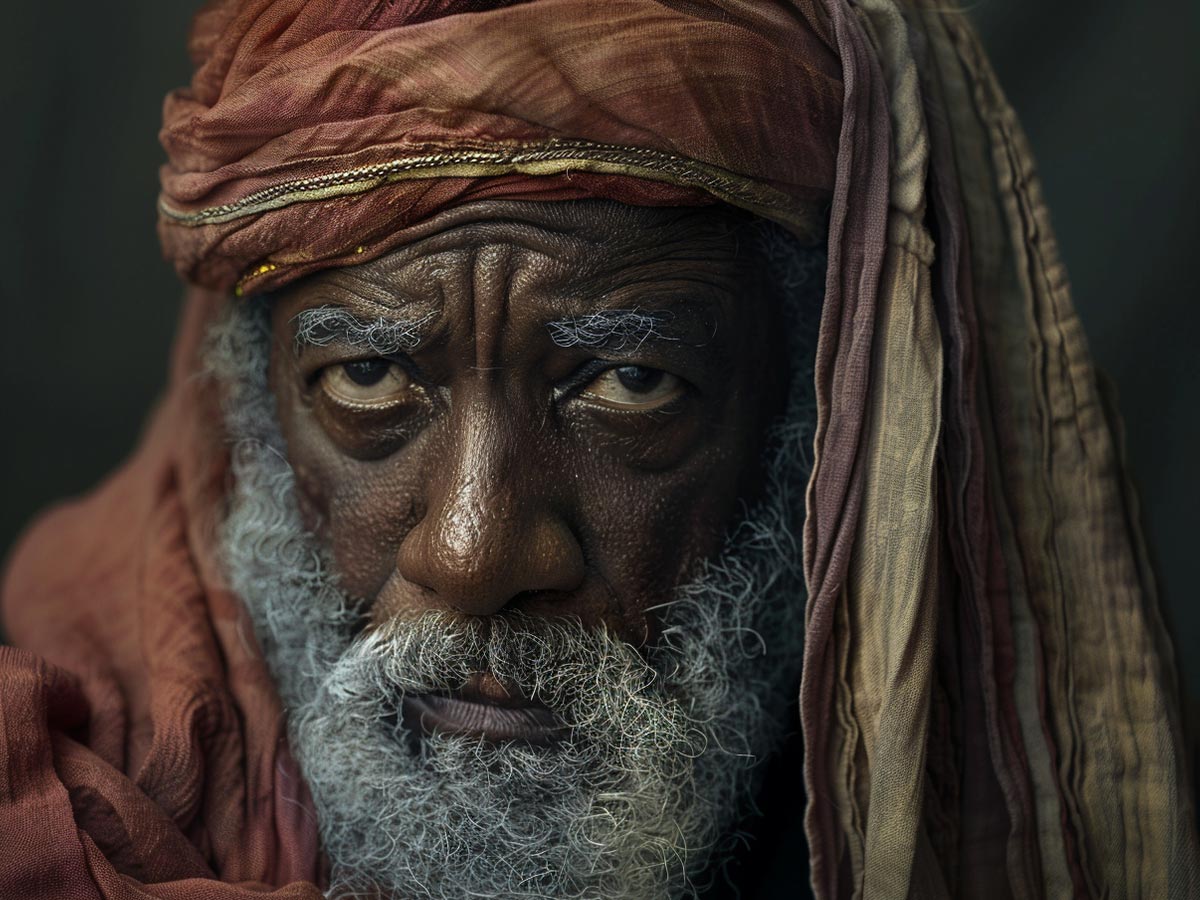
Herod Antipas, a name forever tied to the story of the infant Jesus, ruled a small territory in Judea as a tetrarch under Roman authority. History paints him as a ruthless king who, fearing a rival to his throne, ordered the massacre of children in Bethlehem after the visit of the Magi (as described in the Gospel of Matthew).
Imagine a man of Judean descent, possibly with dark hair and skin, adorned with jewels and dressed in fine clothes, reflecting his royal status. He might appear arrogant, paranoid, or even fearful, reflecting the weight of his decisions in the face of the momentous events surrounding Jesus' birth.
Ra

According to Egyptian mythology, Ra wasn't merely the Sun God but the king of the gods. Egyptians believed Ra created the world, ruling during the day in a sun boat traveling across the sky. Each night, Ra battled a giant serpent god representing chaos, ensuring order returned with the dawn.
Ra was most commonly depicted as a man with the head of a falcon, a majestic bird soaring through the sky. A golden sun disc adorned his head, often accompanied by a cobra, the uraeus, a symbol of protection. Ra wasn't limited to this form, though. He sometimes appeared as a ram, a scarab beetle, or even a lion-headed figure, reflecting the different aspects of his power and influence.
Osiris

Osiris is the Egyptian lord of the underworld and symbolizes rebirth and the afterlife. An envious brother, Set, murdered Osiris, and he was then raised with the help of his devoted sister, Isis. This cycle mirrored the natural world's death and renewal, offering comfort and hope to the Egyptians.
Traditionally, Osiris is in a mummy-like form. Imagine him with green, blue, or muddled skin, wrapped in white bandages, a constant reminder of his death and subsequent rebirth. A distinctive pharaoh's crown, the atef adorned with ostrich feathers, sits upon his head, signifying his reign over the underworld. In his hands, he grasps a crook and flail, traditional symbols of pharaohs, emphasizing his continued power and authority even in the afterlife.
Hades

In Greek mythology, Hades was the brother to Zeus and Poseidon who presided over the realm of the dead, a place where all souls eventually went. While not inherently evil, he wasn't exactly the life of the party, either. Popular depictions relate him to Satan, adding horns and demonic features to his portraits.
Historical art depicts Hades as a powerful figure with a serious demeanor, often sporting a handsome yet stern expression. Imagine him adorned with rich garments and jewels, a symbol of the vast resources beneath the earth. Some myths even portray him wearing a helm of invisibility, a physical manifestation of the hidden nature of his underworld kingdom.
Isis

As a devoted wife and sister to Osiris, she personified loyalty and family love. When her husband was murdered by his brother Set, Isis, through powerful magic, brought him back to life. This act cemented her position as a protector of the dead, offering hope and solace to those who mourned.
Egyptians saw her as a healer and a protector, a goddess who could mend the sick and safeguard the vulnerable. Artists typically depict Isis in a long, elegant gown and a towering headdress. In other depictions, a vulture and a sun disc adorn her head, symbolizing both her role as a mother and her protective nature.
Quetzalcoatl

The Mesoamerican god Quetzalcoatl, the feathered serpent, symbolizes wisdom, wind, and creation rolled into one. Imagine a powerful being, a magnificent blend of bird and serpent, embodying the connection between the sky and the earth. In Aztec and Toltec cultures, Quetzalcoatl created the world, all knowledge, and the morning star, Venus.
Artists usually draw him not as a human but as a feathered serpent, a powerful symbol that merges the sky (represented by the bird) with the earth (represented by the serpent). Imagine vibrant turquoise and green feathers adorning his body, further emphasizing his connection to the sky and the wind. In some portrayals, he takes on human features — a beard or perhaps a mask resembling wind — hinting at the wisdom and teachings he bestowed upon humanity.
Coyote
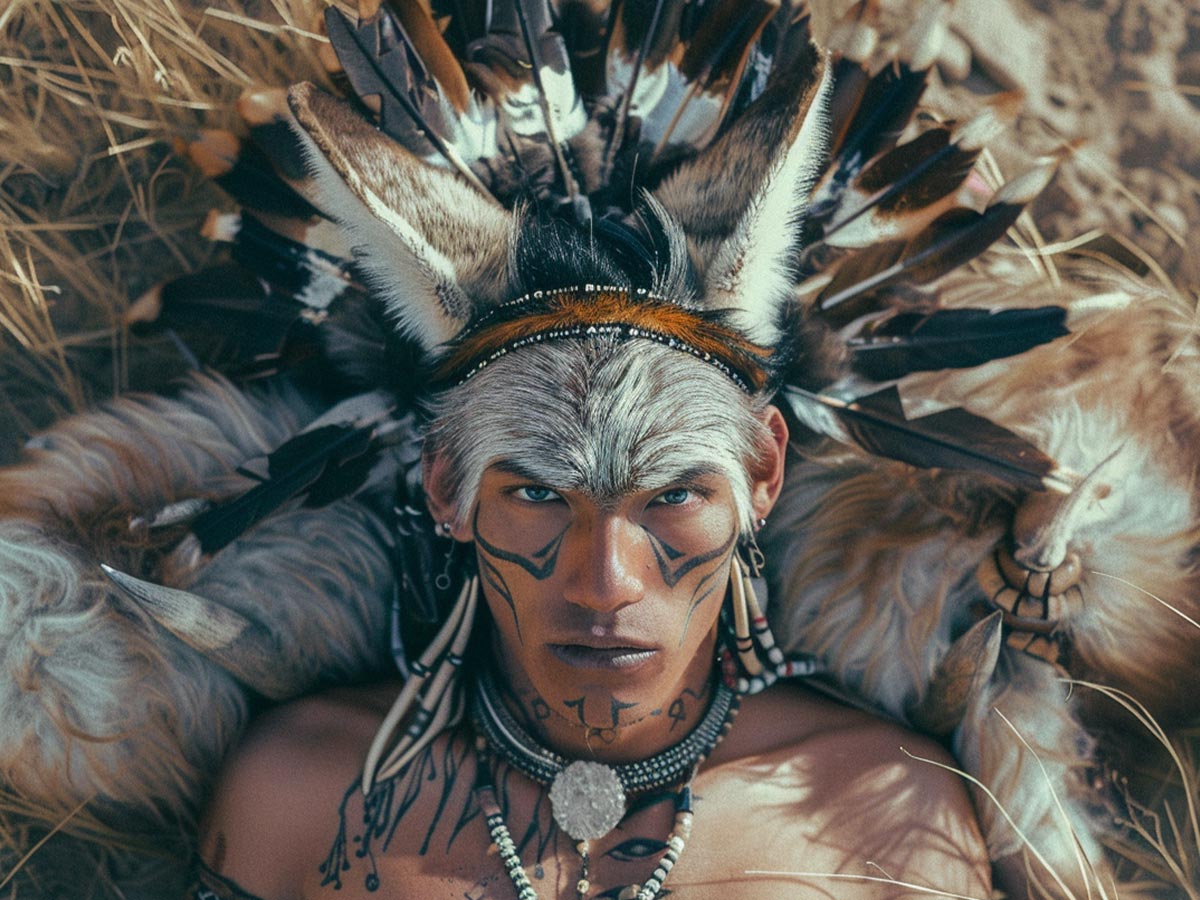
Coyote, the enigmatic trickster god for some Native American cultures, thrives in the messy, playful space between order and chaos, representing both creativity and disruption. Imagine a mischievous figure, a master of cunning and often outrageous pranks. Coyote isn't afraid to shake things up, disrupting established order – sometimes for the benefit of humanity, sometimes just for amusement.
He might appear as a coyote, a man, or even transform into other animals at will, reflecting his unpredictable nature. Some stories depict him walking upright and interacting with humans, blurring the lines between animal and human. Artistic portrayals vary greatly across cultures, each offering a unique glimpse into this multifaceted god.
Spider Grandmother

For the Native American Hopi and Pueblo tribes, Spider Grandmother existed as a goddess who was the weaver of existence. Imagine a wise elder, perhaps depicted as an old woman with a hunched back, a physical representation of the accumulated knowledge and wisdom she embodies.
Spider Grandmother spins the intricate web of life, protects children, and is a patient instructor. You might see her depicted in human form, often adorned with spiderwebs or subtle spider-like features incorporated into her clothing or body.
Thunderbird
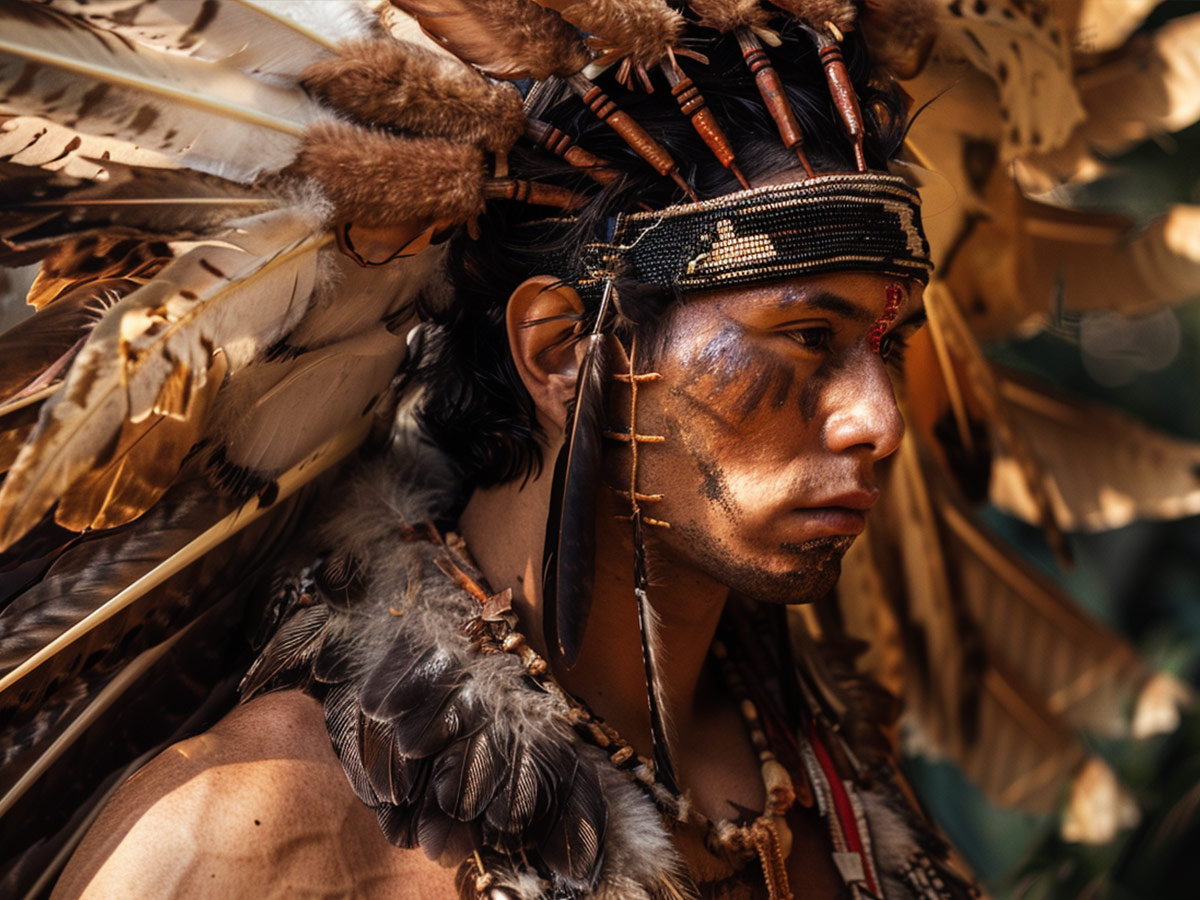
Plains and northern woodland Native American cultures celebrated a powerful diety who soared through the skies – Thunderbird. Thunderbird is more than just a feathered creature. He's the bringer of rain and storms, the one who controls the very weather. Imagine a living storm cloud, a majestic and terrifying embodiment of nature's raw power.
Some traditions revere Thunderbird as a guardian who drives away malevolent forces and watches over the tribe. When not depicted as human, he appears as a colossal bird with a wingspan vast enough to block out the sun. Powerful features like a hooked beak, sharp talons, and piercing eyes further emphasize the immense power he wields. Lightning bolts often crackle from his wings or body, a constant reminder of his connection to the storms he commands.
Manitou
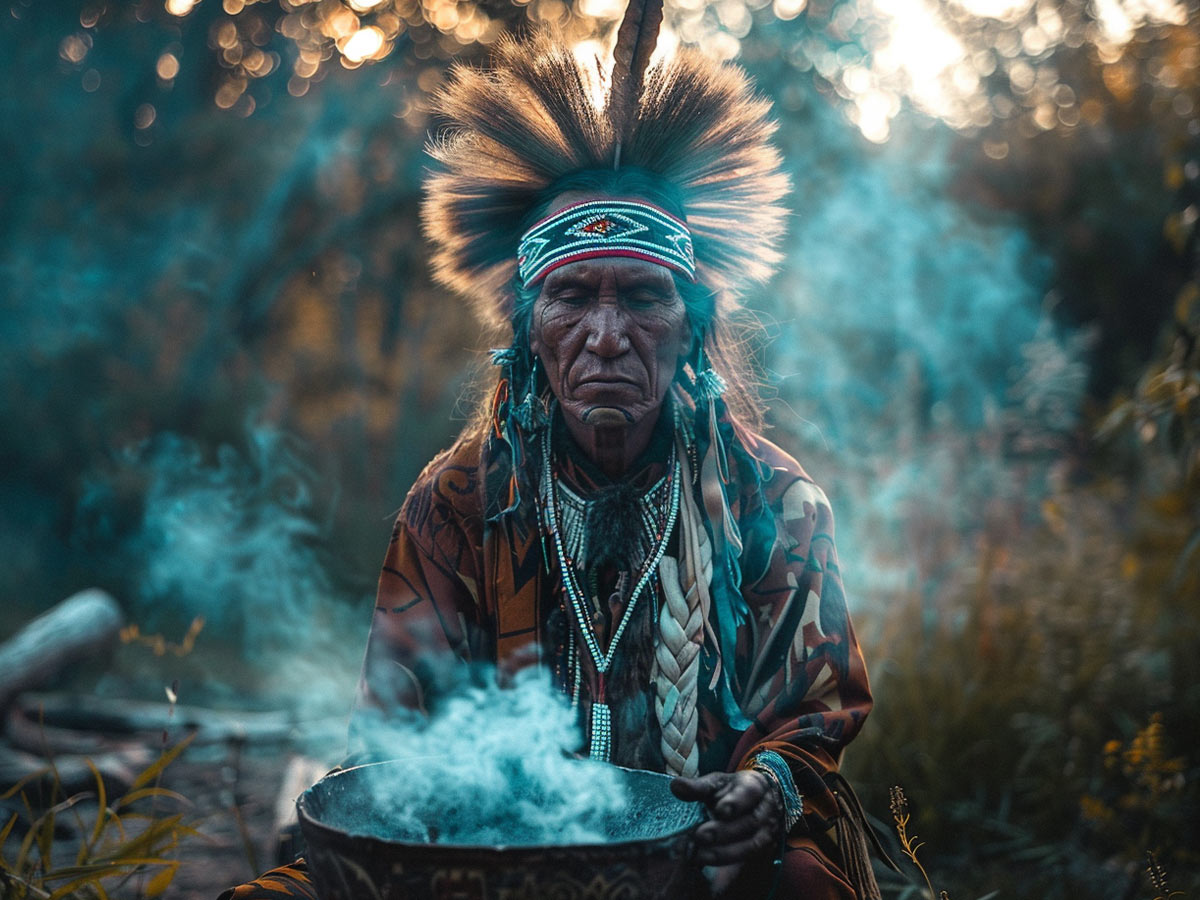
In Algonquian-speaking Native American traditions, Manitou is not a single god but rather an animating force that permeates the universe. Manitou is the energy that flows through all living things and can manifest in countless ways, reflecting the vast diversity of nature itself.
There's no single, set appearance for Manitou. Artistic depictions traditionally focus on capturing the essence of this spirit rather than creating a human-like form. You might see Manitou represented by a swirling storm cloud, a majestic animal, or a symbol of wind. These elements serve as reminders of Manitou's presence in the world.
Iktomi

The trickster god from Lakota Sioux mythology is Iktomi. He's a mischievous but wise teacher who embodies both chaos and creativity. Iktomi loves a good prank and thrives on disrupting the established order. He's a master weaver, not of cloth, but of situations. Just like a spider spins its intricate web, Iktomi can craft elaborate plans to nudge people in the right direction, even if it means a little trickery is involved.
Sometimes he appears as a frail old man, hunched over and wrinkled, leaning on his cane. Other stories depict him with more spider-like features, a visual reminder of his web-weaving trickery. This variety in appearance reflects the moral ambiguity Iktomi embodies – a trickster, yes, but also a teacher with valuable wisdom to impart.
Horus
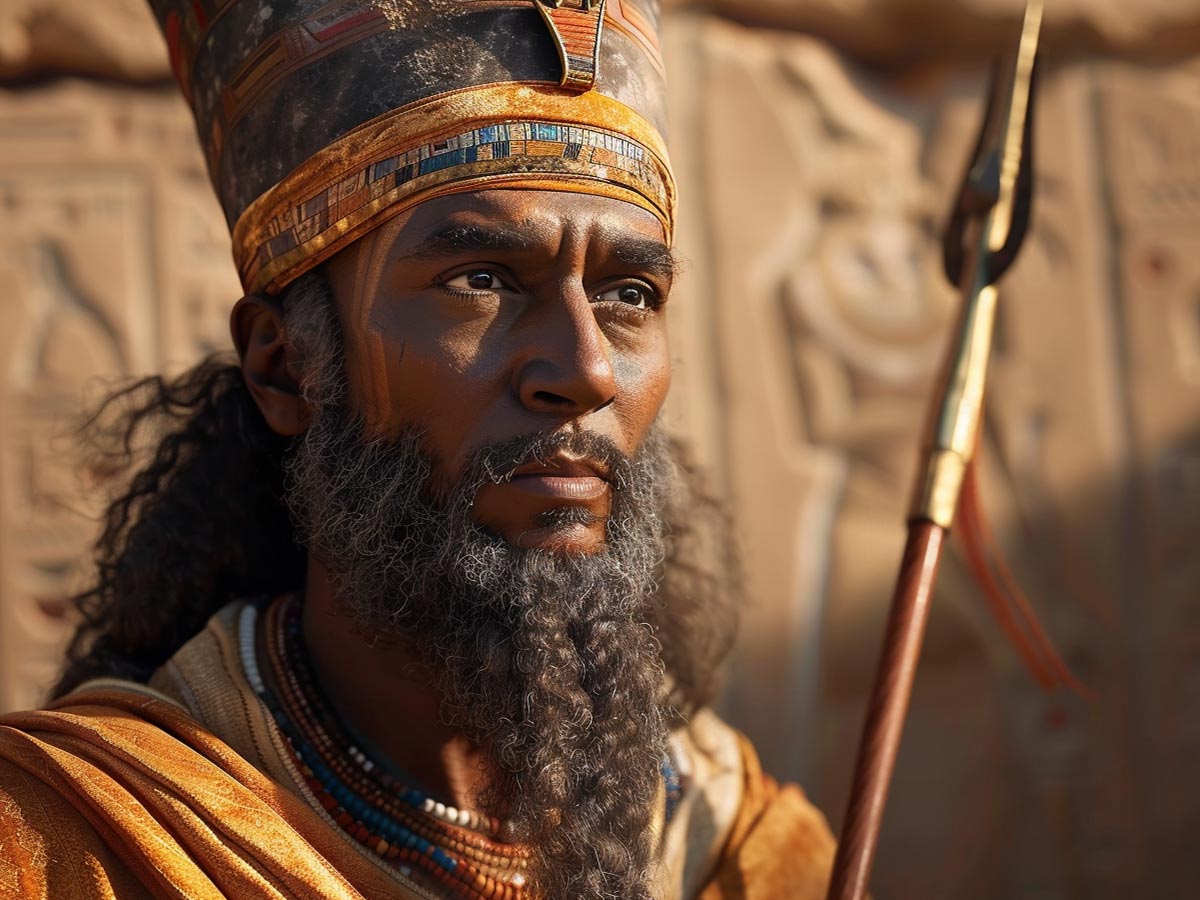
Horus is a prominent figure in Egyptian mythology who embodies kingship and the dominion of the heavens. Born from Isis and Osiris, Horus avenged his father's murder and eventually secured his rightful place as heir to the throne. Egyptians saw Horus as a symbol of the pharaoh's divine right to rule, associated with the sun, the vast expanse of the sky, and unwavering protection.
He's typically depicted in one of two ways. The most common form is a falcon, a powerful bird of prey soaring high above. He might also be depicted as a man with a falcon head or even as a regal king clad in beautiful clothing. Fittingly, he often wore a double crown, the pschent, signifying his dominion over Upper and Lower Egypt.
 Author
Jennifer Freehill
Last Updated: May 28, 2024
Author
Jennifer Freehill
Last Updated: May 28, 2024
